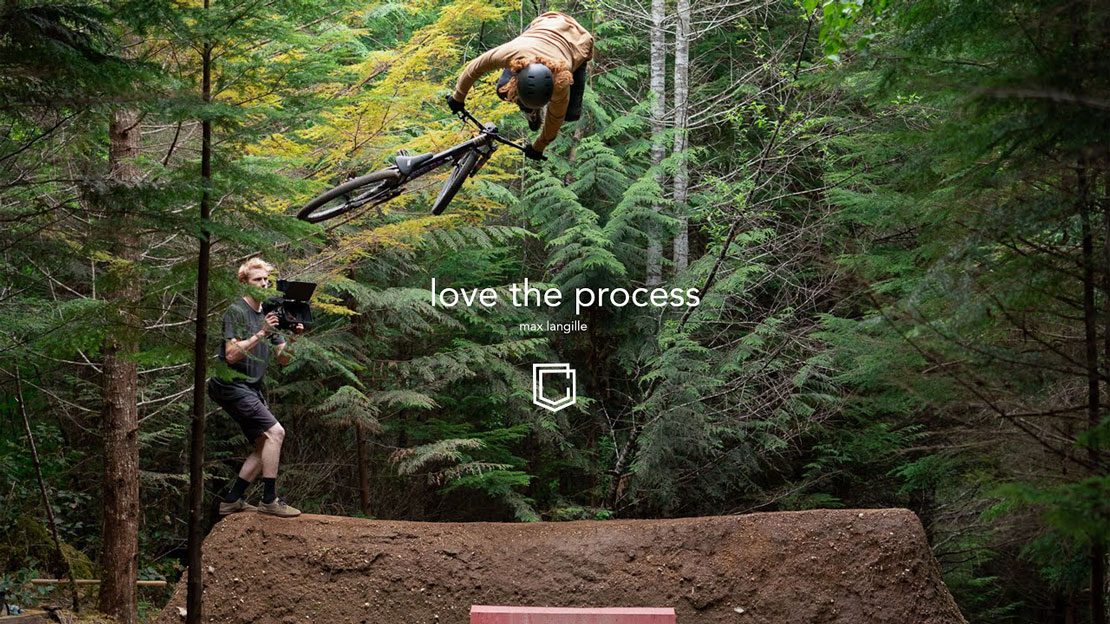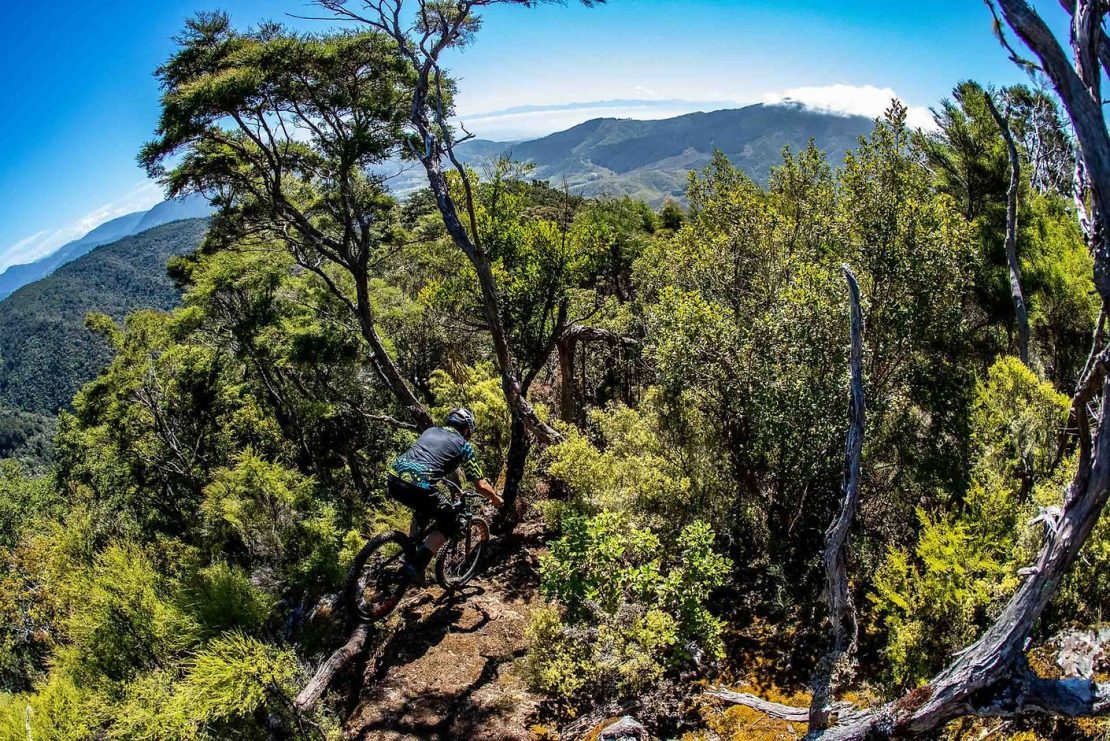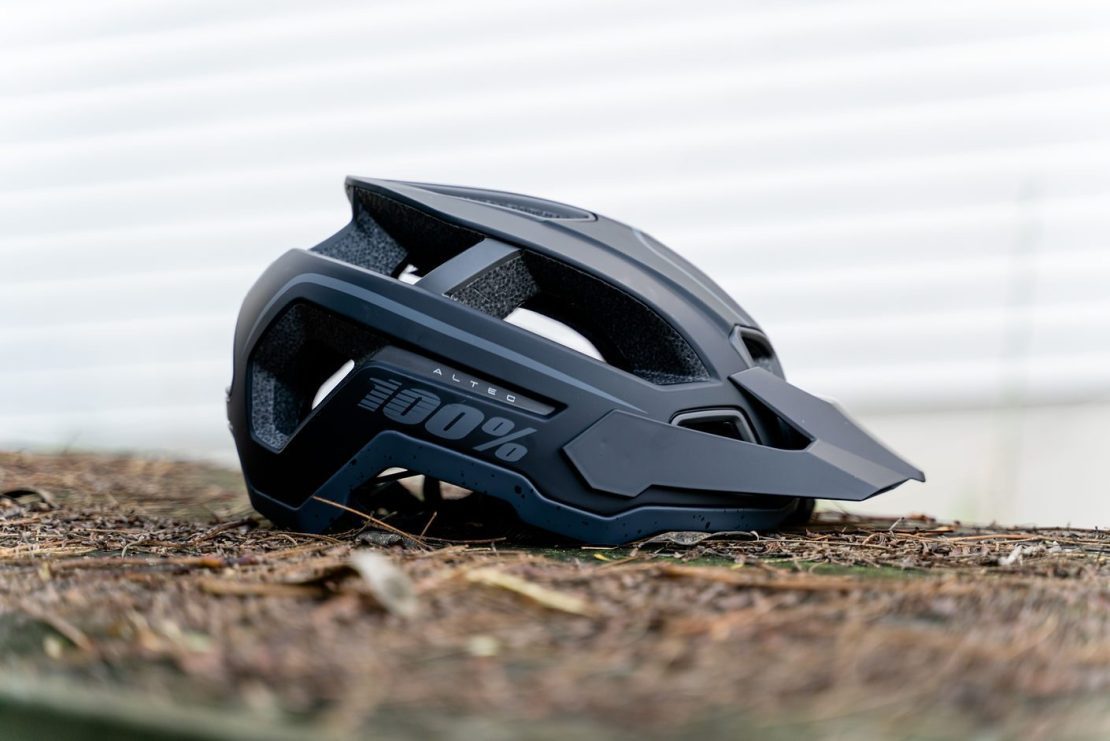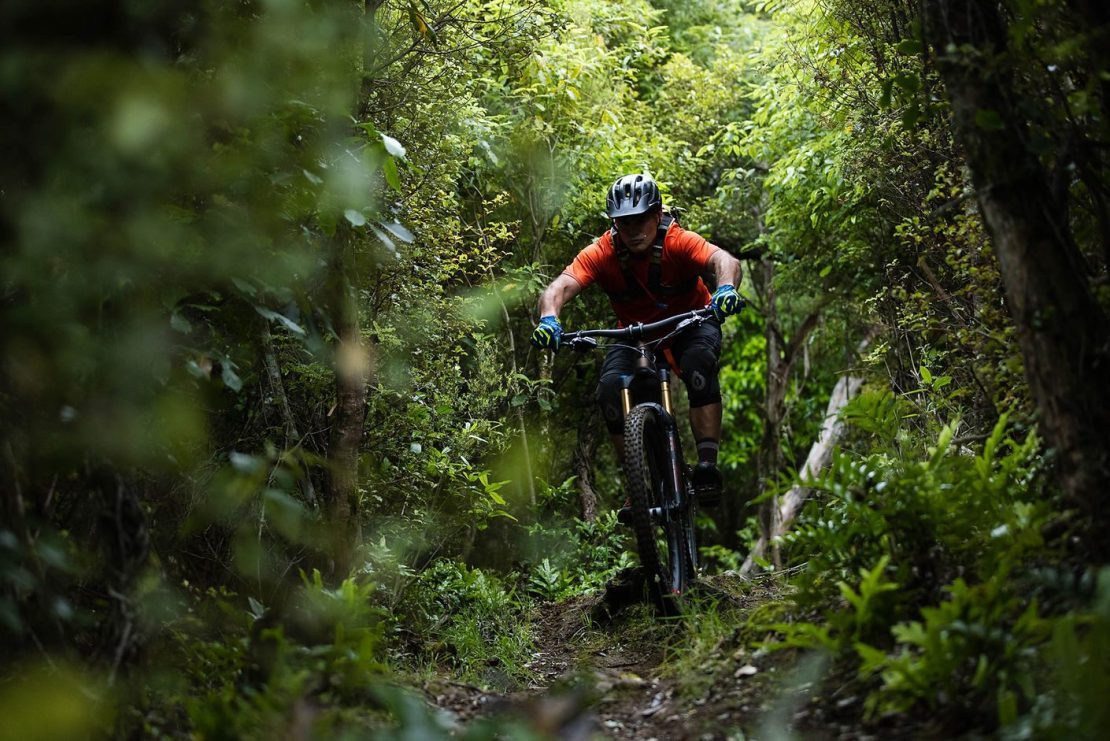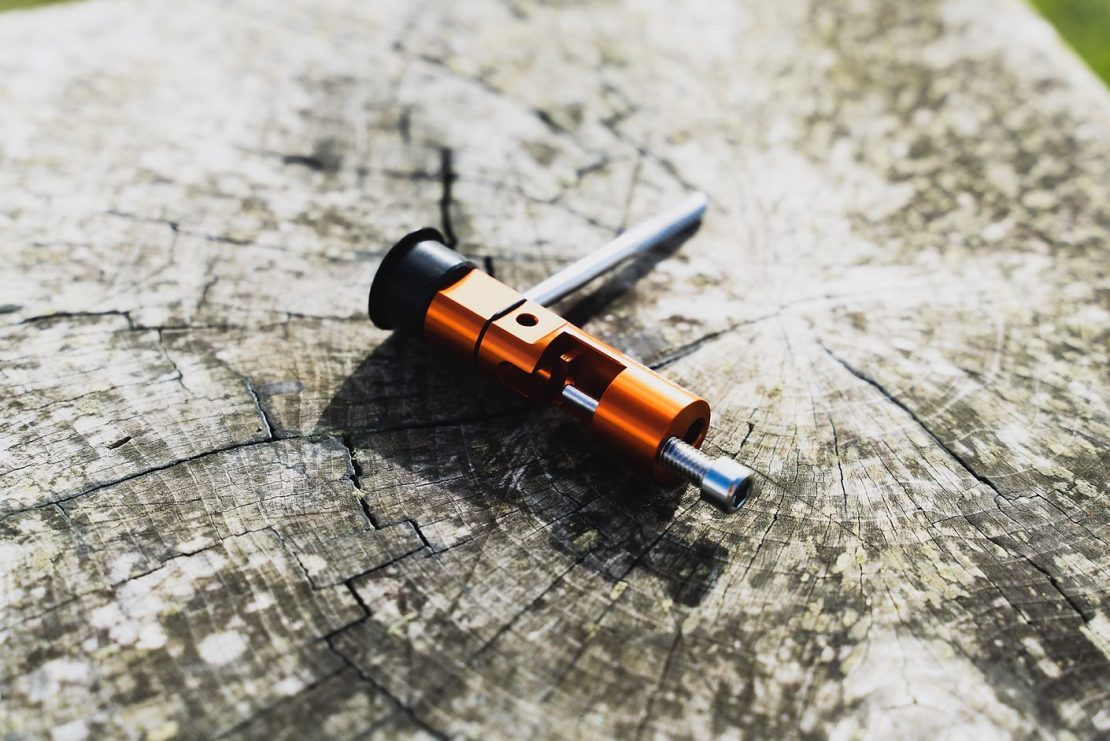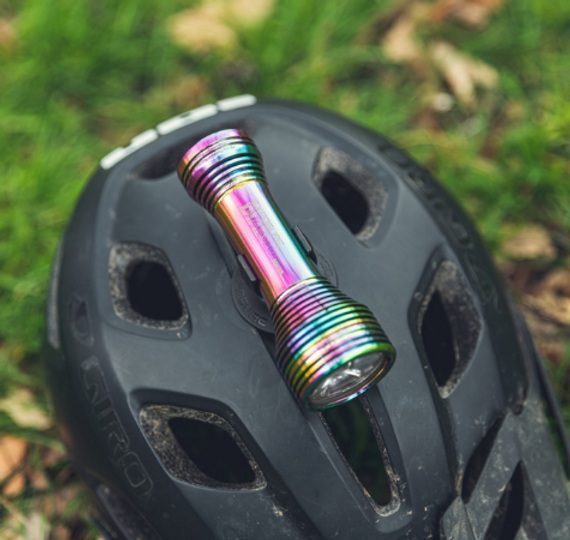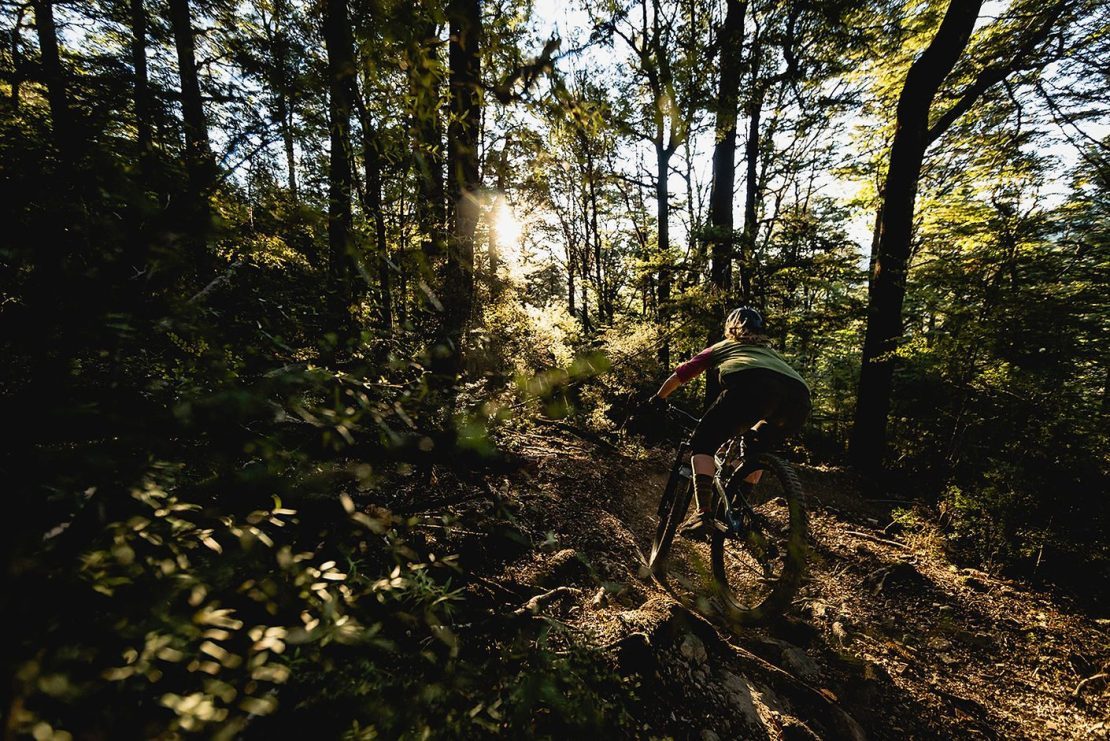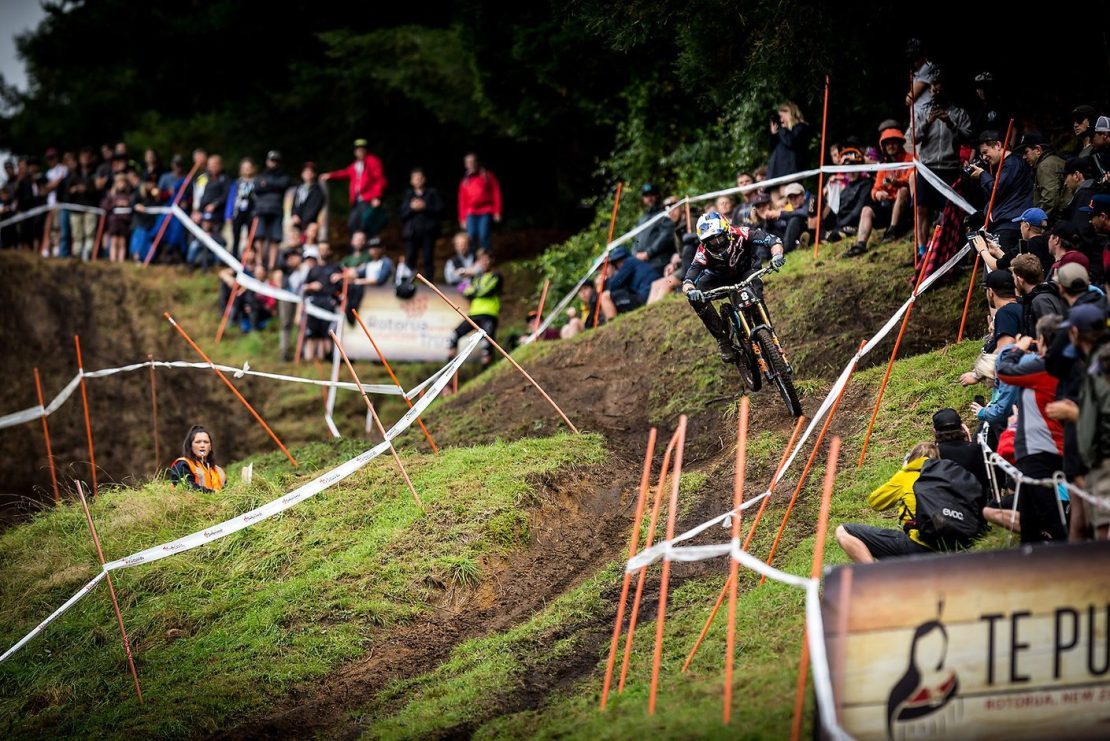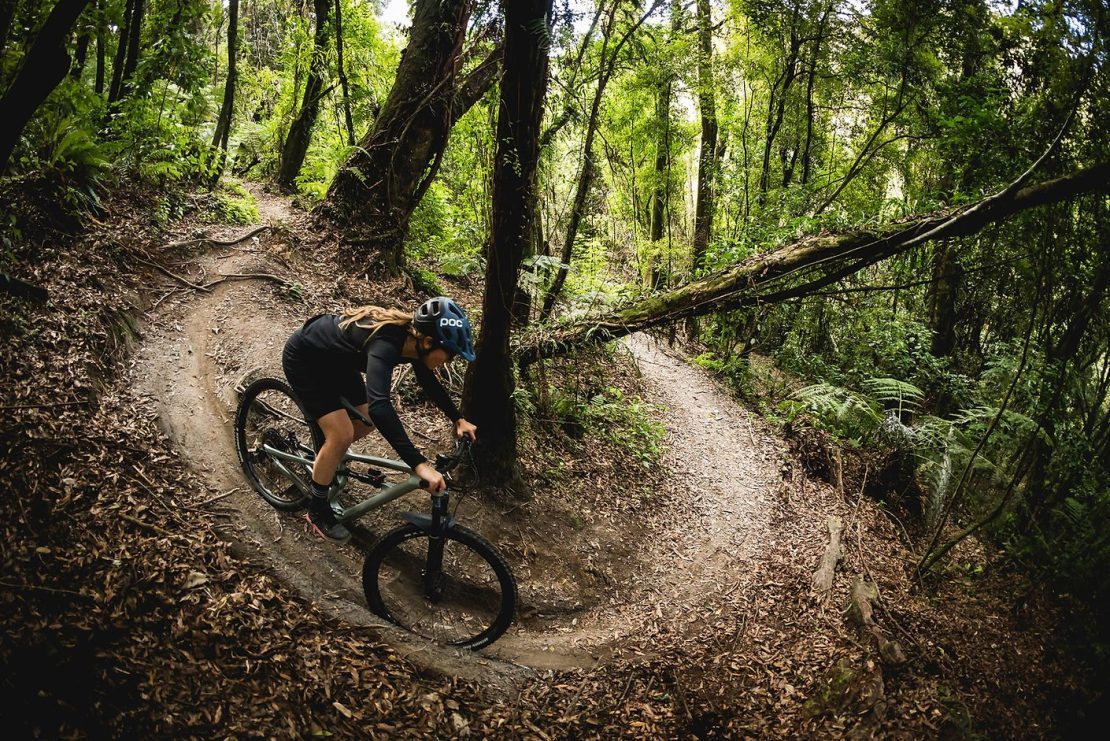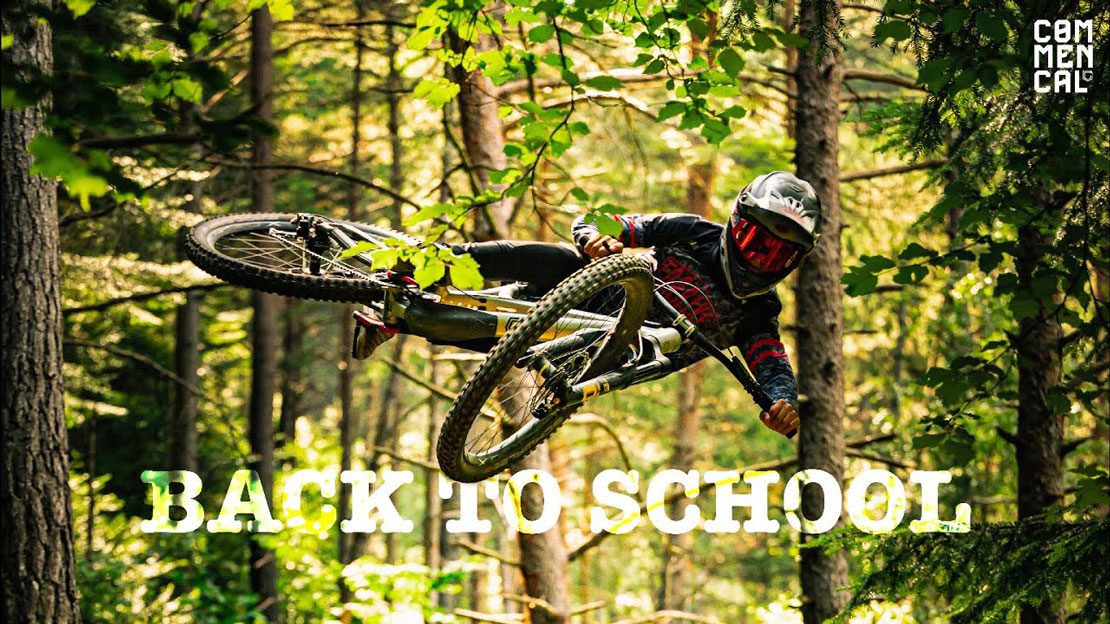Video: Love the Process - Max Langille
Love The Process, a tail of trusting yourself and what you’ll become. This film by Dylan Siggers gives a cinematic mix that’s meant to draw you into Max Langille’s process of completing a video part and dialing in tricks for competition.
Shift down, and enjoy a little peek into his process.
Story: A Nelson Underdog
Wairoa Gorge is, to many people, some of the best riding in New Zealand – perhaps even the world! And it has a story to match; one that has been told again and again, without growing old. One story that is yet to be told, however, is that of Nelson’s newest trail network out at Cable Bay Adventure Park.
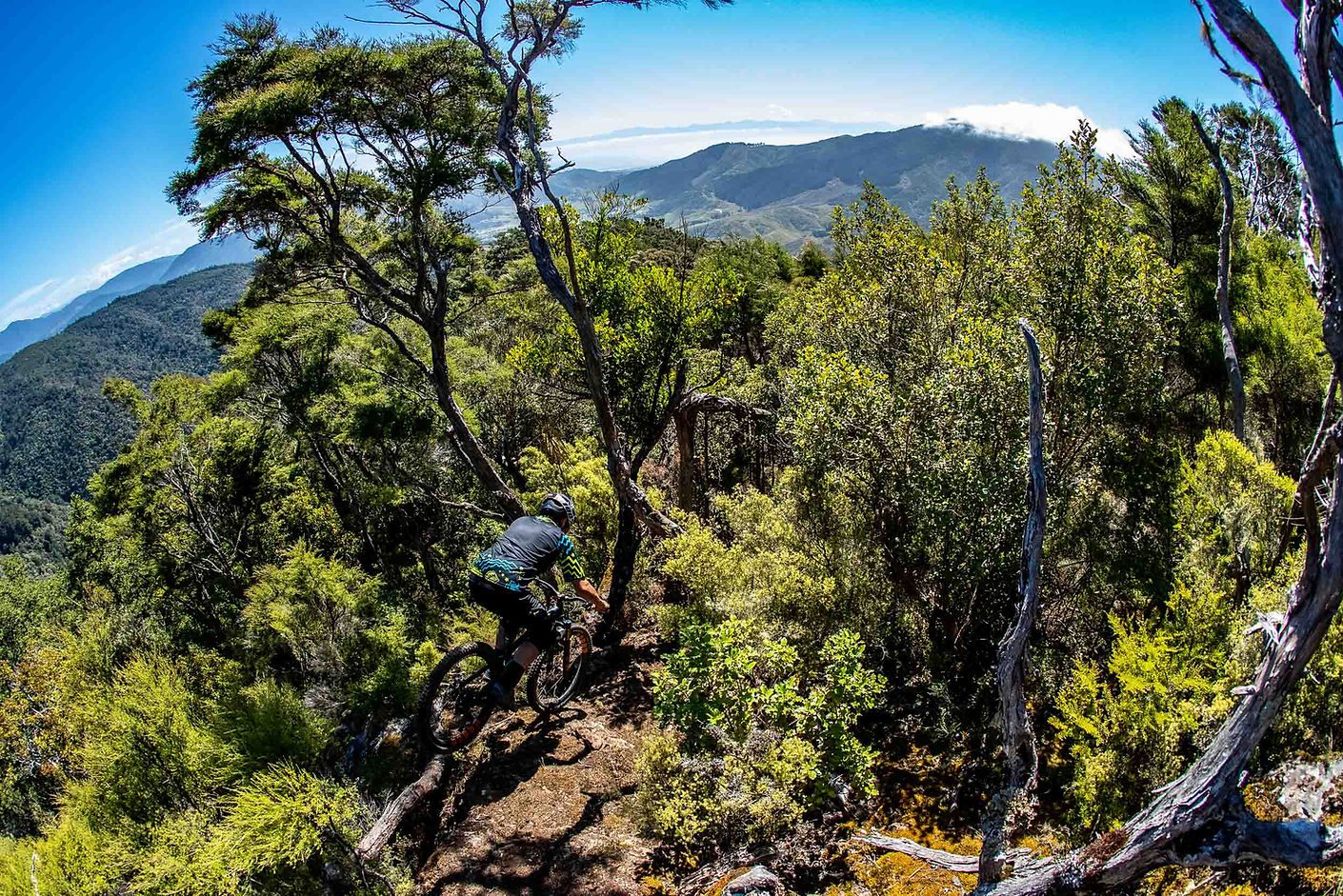
The story, as well as the park itself, is a work in progress as the park has not yet officially opened (update as of time of publishing: Cable Bay is open for mountain biking!) as a mountain bike destination. It does see well over 150 daily visitors throughout the peak season though, who go quad biking up the many forestry roads, horse-trekking through the native bush, challenge themselves on an archery dragon hunt, shoot across the valley high above the canopy on the SkyWire, and enjoy the mouth-watering delights of the Base Café. Basically, it’s a pretty busy place.
As you’d expect, this hasn’t stopped the MTB community whatsoever.
It all began with Richard and Elina Ussher, a well-known adventure-racing couple - the epitome of fitness and adventure teamed up with fantastic personalities. A strong indication of evolution having peaked, as they also happen to be ridiculously good looking. Having travelled the world in pursuit of challenging adventure, Elina and Richard were both well accustomed to risk and dealing with uncertainty, yet their biggest adventure to date was to happen much closer to home when they took over Happy Valley Adventures and turned it into Cable Bay Adventure Park in December 2017.
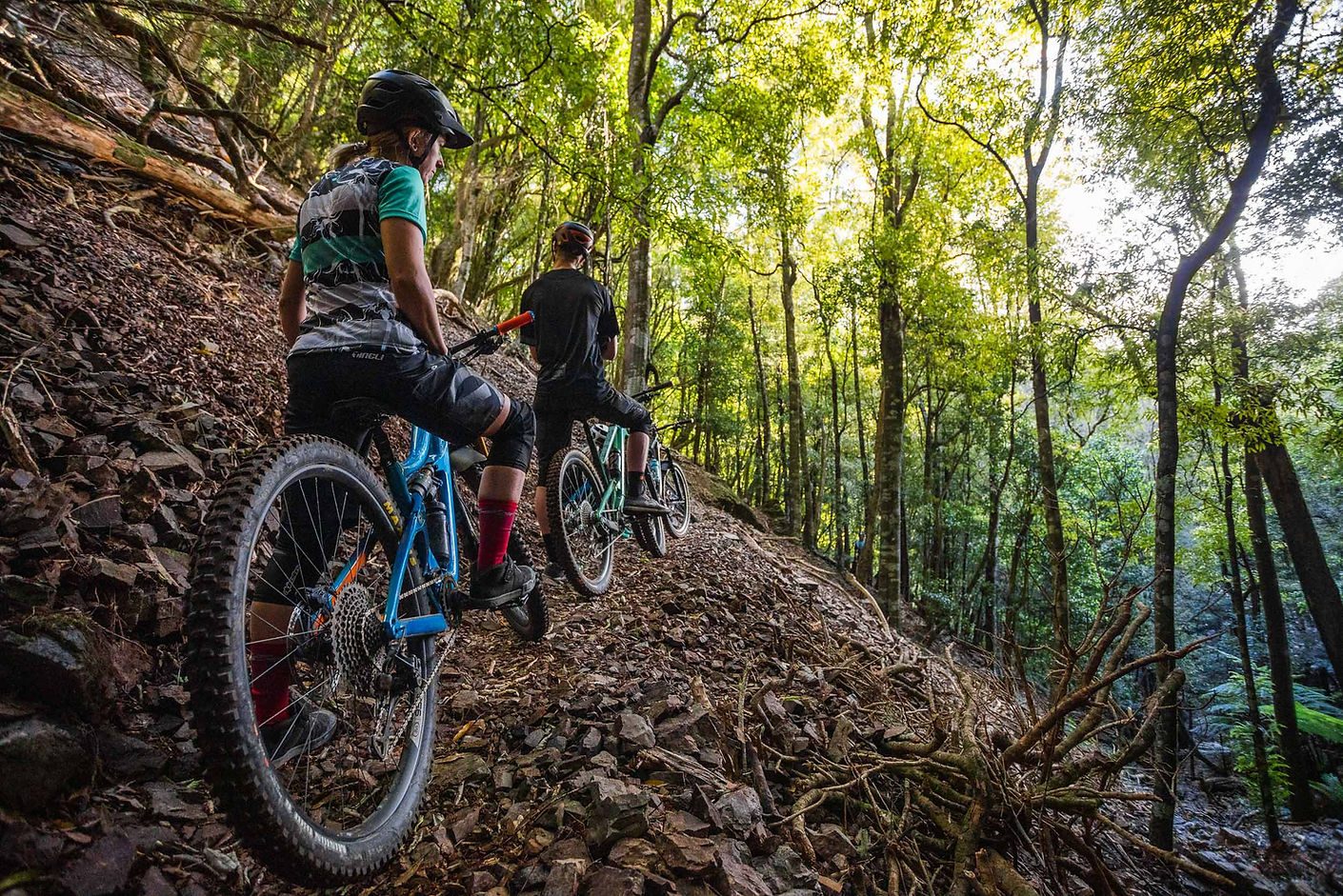
It wasn’t long before Richard, staying true to his adventure-racing background, had run up, down and across the 500 hectare property enough times to have a pretty good idea of where he wanted tracks built. After joining a couple of the local Super D races in Nelson, organised by Loui Harvey, Richard was keen to show Loui around. Now, for you guys who know the two of them, you can only imagine the sparks that flew that evening in the forest when Mr Enthusiastic met his equal in Mr Grand Plans. For you guys who don’t know them, imagine Chip and Dale - on steroids - if the two chipmunks were of completely different builds and backgrounds.
Trail building took off properly in October 2018, once Loui returned from a six-month overseas trip, racing the EWS. After a month of weekly night-digs, there was a group of 10 or so members who were to make up the core group of the operation. These guys didn’t only show up during the lovely summer nights with never-ending light, but also throughout the dark, wet and cold winter months, to get the job done.
Richard describes the decision to buy the park as a “calculated gamble”, so the first ever single trail out at the park was named, and is now affectionately known as ‘The Gamble’. The team, despite their occasionally unfavourable working conditions, seem to all keep turning up – being generously fed and hydrated post-digging has certainly contributed to this kind of commitment and vibe; a vibe worth returning for. I’ve been there; I’ve heard them all tell the stories about the size of the rock they moved off the track - much like a great fishing story, the hands get further and further apart with each rendition. Eventually, winter turns into spring and then summer, one track turns into two and then five.
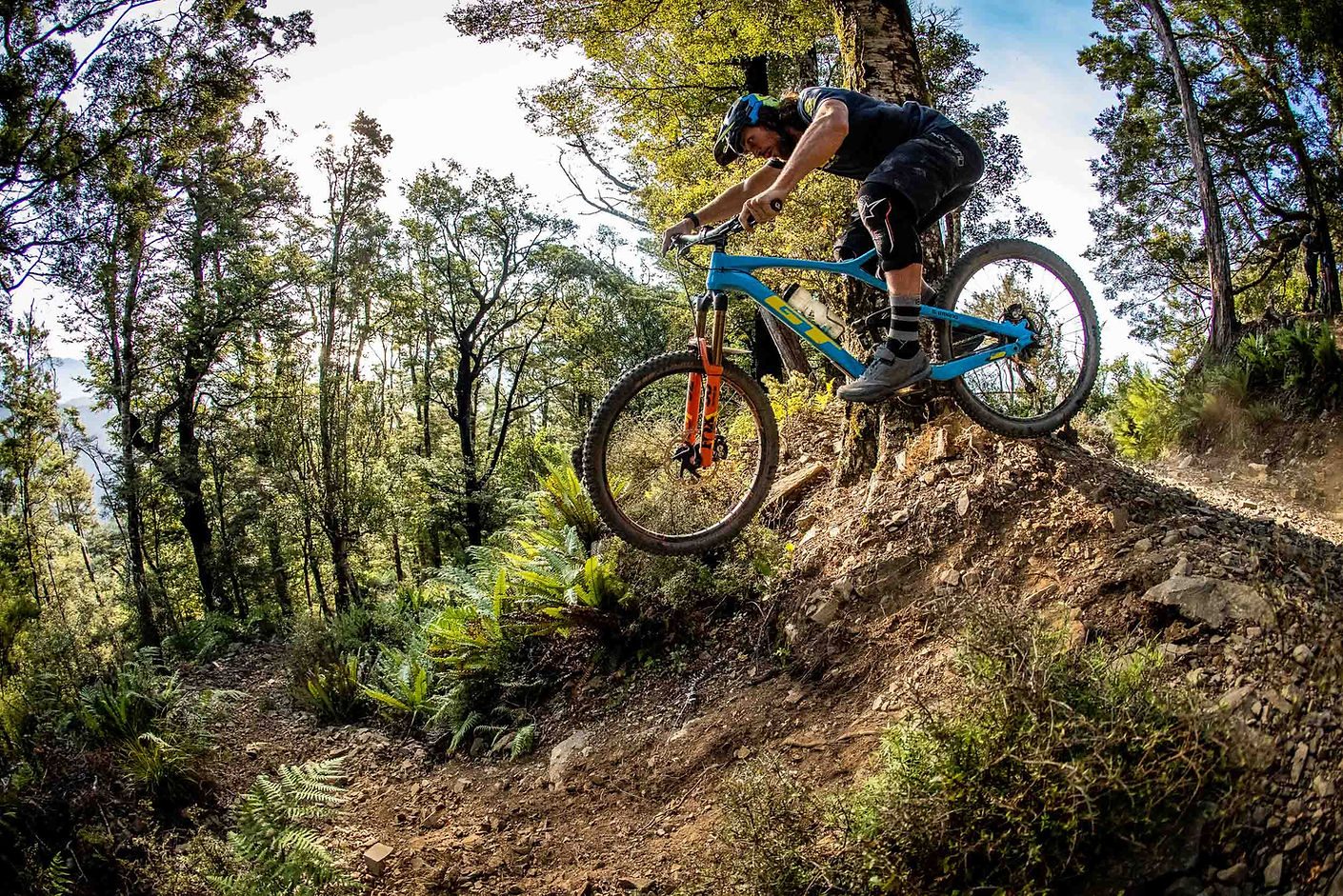
Fast forward to summer 2020 and, after a life-changing ride in the Polaris uphill and an eventful skidfest following Sven Martin, Sweden-based kiwi Steve (@stevesmurfy) Murphy claimed that The Gamble had landed in his top five tracks ever ridden. You guys who know Steve are probably aware he is easily excited when it comes to riding bikes down a hill, but you’ll also know he has ridden his bike on a lot of trails around the world so I will claim it for the purpose of this article. The face of Loui, who has managed the trail building efforts and, along with Richard, has marked out where most of the trails will go, lit up upon hearing this and replied: “You just wait ‘til you ride Jurassic!”
Climb aboard the Polaris to smoothly Segway up the steep, baby-head-littered forestry road to the same starting point as The Gamble, enjoy a second go at the log drop and the rocky chute - but for goodness sake do not pedal that short climb again! Instead hang left into a different world. It’s here you might find that, unless The Gamble converted you already, you become slightly religious…. OK, at the very least you’ll find it pretty cool. But, don’t go ahead and peak prematurely; I haven’t even started talking about the trail itself yet. The aptly named Jurassic is carved out amongst giant pungas, mighty natives, dramatic shapes and a multitude of dark green shades that will have you imagining that you’re riding alongside a shrieking T-rex with abnormally short arms. This could just be Loui, but you won’t know as you’ll be too busy managing your trail-froth. After negotiating unexpectedly well-built corners, rowdy rock turns, Chiliean anti-grip like dust, into off-camber anaconda roots for 600 metres of vertical descent, you won’t mind that gentle pedal out along the creek to get all your ducks back in a row.
Next up, the Cable Bay DH track. Starting with a no-fuss firebreak, straight-line into the pines before you hit the road gap that drops you into one of the few sections of natives, after which you’re on your own in the open with nowhere to hide. By getting increasingly steep, the trail will ensure you stay on your game. A 10 minute, on-demand shuttle will have you back at the top so you can do it all again.
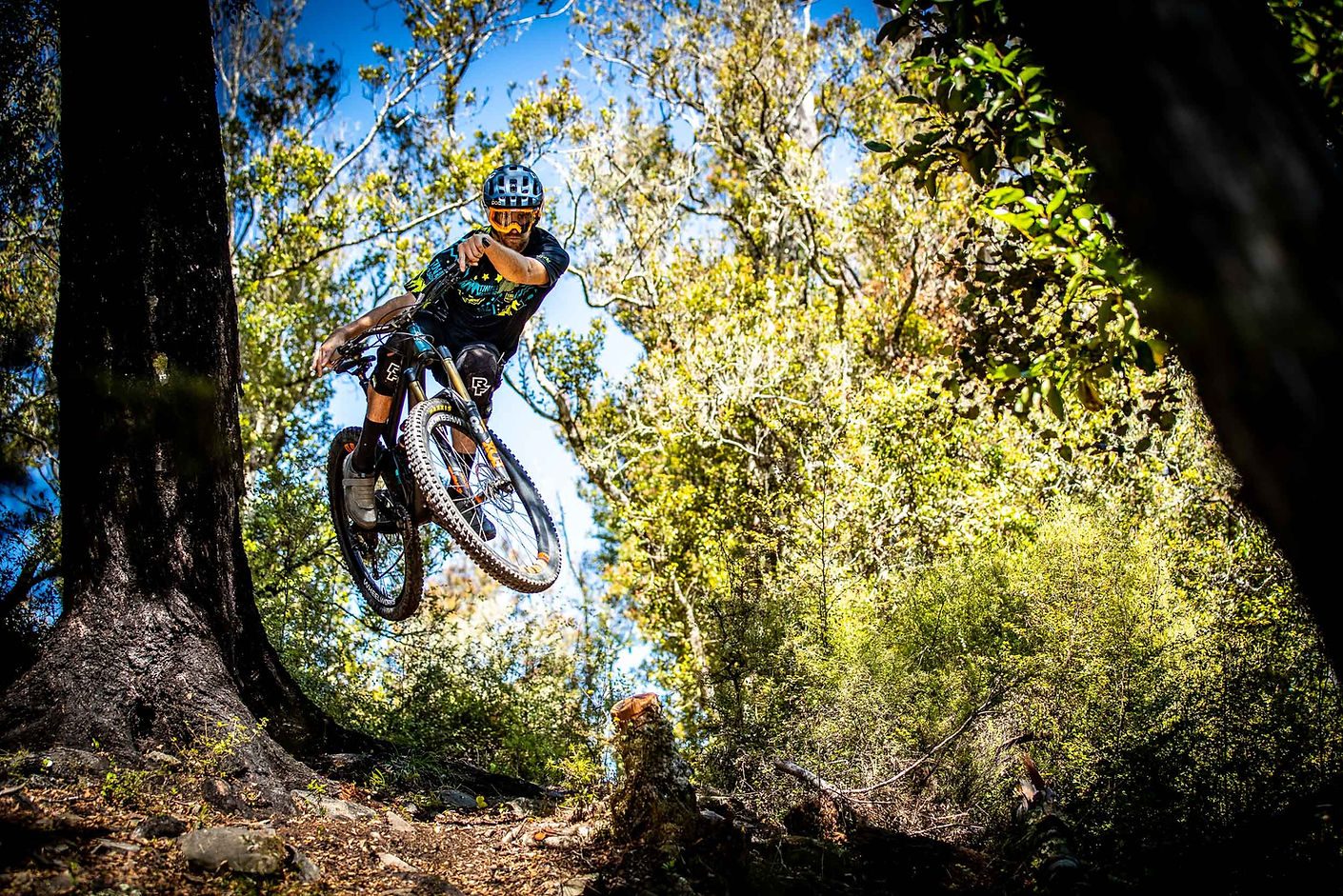
If, however, these grade 4-5 trails do not appeal to you in any way, you might be more interested in the fact that the shortest pedal takes you to Formula 1; a wide, flowy, digger-built grade 3 that lends itself nicely to smashing out a few laps. Whilst talking about laps – one of the many grand plans for Cable Bay, is a trail following the perimeter of the park creating a nice, long (not to mention, scenic) loop to ensure there is something for everyone.
Having been created by – and for – the community, Cable Bay Adventure Park has already landed firmly in the hearts of locals and, through its easy access, is now gaining traction both nationally and internationally. What can I say? Everyone loves an underdog!
Words: Jess Enlund
Images: Sven Martin & Henry Jaine
Review: 100% Altec Helmet
Helmets sit at the very top of the ‘protection pedestal’ when it comes to mountain biking. Whilst it makes choosing a helmet a little overwhelming, I’m stoked to see so many different companies pushing them out. Helmets, and protective gear, are among the only product groups in mountain biking that I can get behind when it comes to companies pushing out gear quickly - ultimately, the safer we are the further we can push, and the less likely we are to develop injuries and conditions (such as CTE) further down the line.
It seems like only yesterday that 100%, a company with roots in motocross, started pushing into our sport. They’ve for sure made their mark - and the Altec is their first foray into open-face mountain bike helmets. It features 15 vents and, whilst this number isn’t even close to industry leading, the vents are all HUGE. It also features 100%’s Smartshock Suspended Rotational System, which is essentially their answer to MIPS. The Smartshock System is designed to absorb rotational impacts by compressing and allowing the helmet liner to move independently to the helmet’s shell. The independent movement reduces force on your brain, lowering the chances of brain injury in a crash. A network of shock absorbers throughout the helmet basically mean that unlike the traditional MIPS netting you may be used to on some older MIPS helmets, the Smartshock System doesn’t look all-too-different to a set of standard, pre-MIPS helmet padding – remember those days?
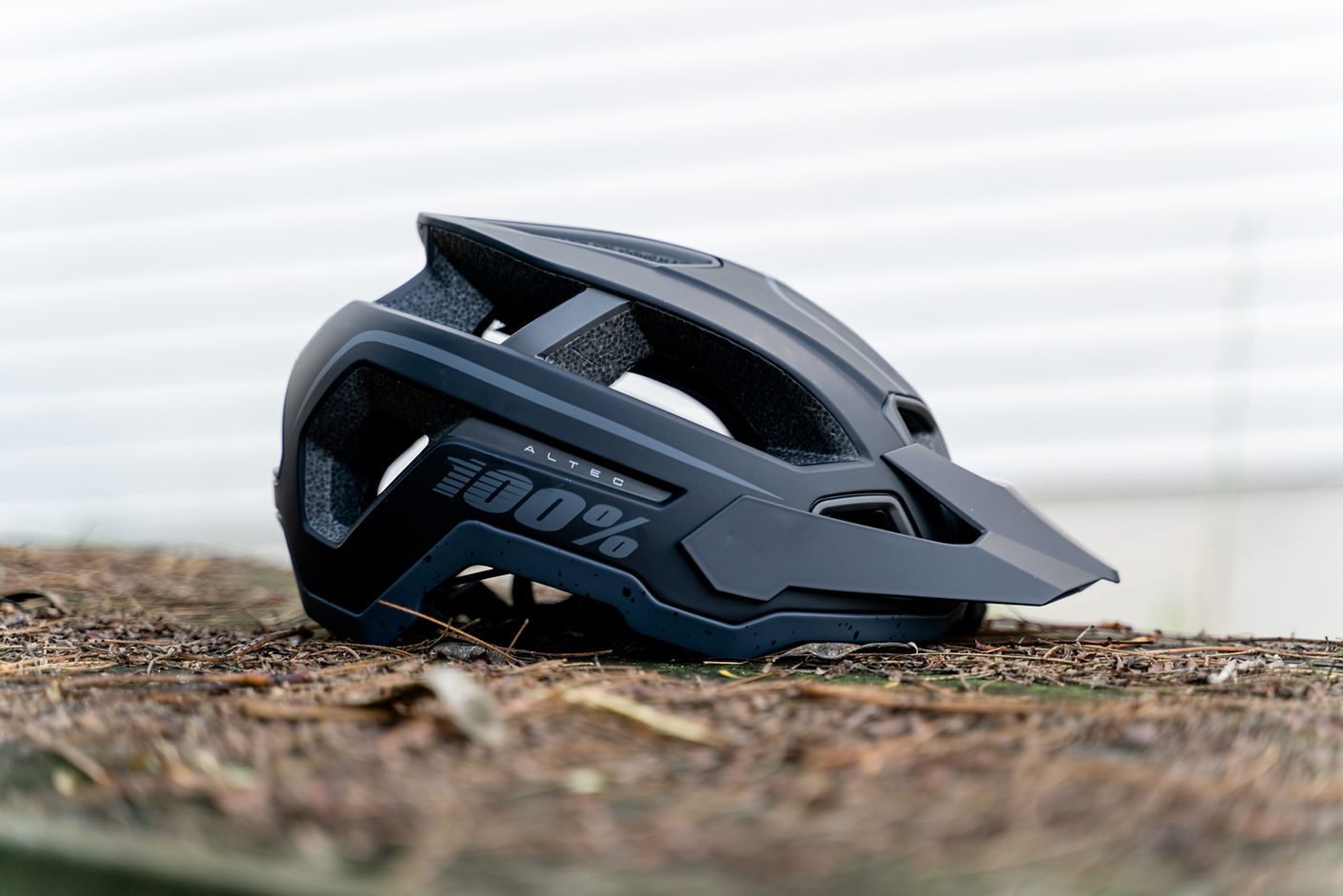
I’ll start off by saying that the Altec is comfy. Not necessarily ‘write-home-about’ comfy, but it sits firmly middle of the road. The first time I tried it on, I felt a little pressure right at my temples, but after noticing that there are two mounting points for the harness, I moved it to the backmost option and found the pressure was gone. I’m a couple of months into my time with the Altec now, and have found that when I first put it on there’s a tiny amount of pressure right by the adjustment dial on the back of my head, but once I’m moving I completely forget about it. It’s worth noting that I didn’t find any info on the different mounting points for the adjustment harness, but if you pull back the foam you’ll find you have two mounting points right above your ears, and two where the adjustment dial attaches to the helmet. I’ve heard a little feedback about how some people have found the Altec doesn’t fit ‘quite right’, so if you’re trying one in-store and it doesn’t feel ‘quite right’, have a play around with the mounting options. In terms of coverage, it does a decent job. It doesn’t sit cross-country helmet high, but it doesn’t cover as far down the back of your head as some of the other trail helmets do. Less coverage also keeps the helmet lighter, and I found the combination of this and the lower weight actually felt really good around some of my local trails, where there’s not a ton of steep, rocky or rooty riding.
This helmet really shines on the ventilation front. As mentioned earlier; whilst 15 vents isn’t an impressive claim in itself, the amount of air these 15 vents let through is definitely worth mentioning. I’ve been testing this helmet over our transition from autumn to winter, and on one cold winter morning I actually rode back to the car to swap out the Altec for another helmet that doesn’t breathe as well. I can already tell the Altec will be my go-to summer helmet, given how well it breathes and the fact that the foam liner does a great job of keeping sweat off your face. The Altec also features three visor positions, so you can ramp it all the way up to stash your goggles underneath, then pull it back down once you’re ready to ride. I was actually pretty stoked on the fact the visor is stiff enough that it won’t move by itself, but not so stiff that it feels like you’re trying to rip the helmet off your head to adjust it.
All in all, would I recommend the Altec? Definitely. It’s lightweight, great ventilation means you almost forget you’re wearing it, and the Smartshock System adds that little extra peace of mind.
Distribuited by FE Sport / RRP: $299
Words: Cam Baker
Review: Santa Cruz Bullit
I had two reference points coming into this review: the first was the original 1998-2005 Santa Cruz Bicycles Bullit; the second was Lt Frank Bullitt’s tyre-peeling, torque-monster of a Mustang Fastback from the 1968 movie of the same name. The first reference point provided a lot of context for this new version of the Bullit, given the original bike developed a bit of a cult following in freeride circles back in the day. The second reference point provided some unexpected context for how the new version of the Bullit performed on the trails.
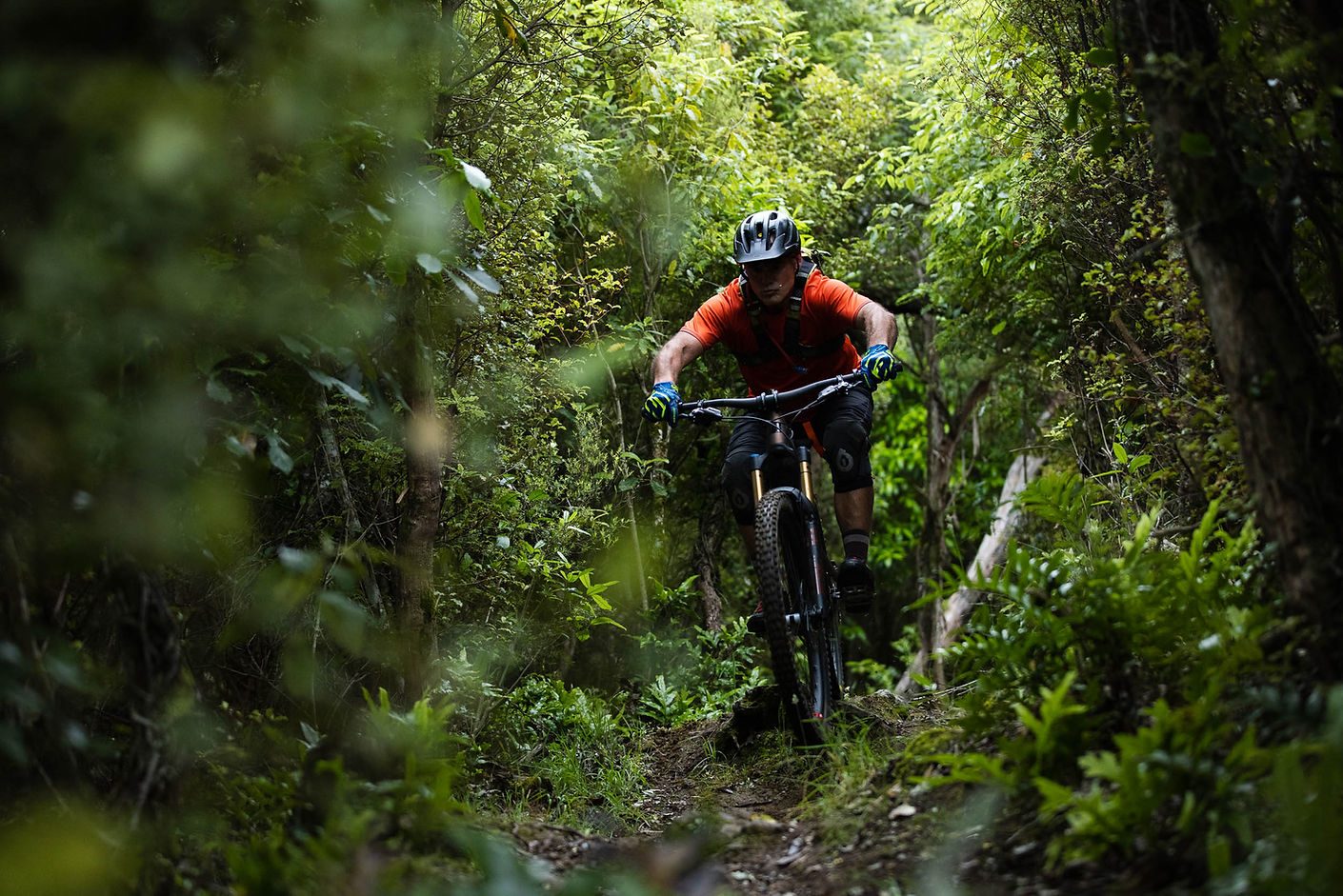
Hyperformance Hardware (the NZ Santa Cruz Bicycles agent) set up a media camp in Nelson when the first two Bullits landed in NZ, with a brief to throw them at Nelson’s biggest hills and toughest trails. Like any good bike review, the weather was also organised just as well as the media camp schedule was, so we got the full gamut during three days of sweet riding.
So, what have we got here? In Santa Cruz Bicycle’s own words; the new Bullit takes a ‘no limits approach’, is unapologetic and with a spec and build that ‘reflect the smashability of the platform’. It is also ‘a bike for riders who seek V10 level terrain that's out of range of any chairlift or shuttle road’. Bold claims. Have they been met?
Full disclosure #1 first: I realised pretty quickly that, subconsciously, I’ve been keeping myself at arm’s length from the pedal assist, mountain e-bike evolution that we are seeing in NZ and globally - for no good reason at all. I’ve already seen and experienced a rapid evolution in mountain bike design over my years of riding and racing. From what we were riding in the 90s, to what we are riding today, is nothing short of comparing a Model T to a Shelby Mustang. So why should jumping into the pedal assist e-bike space be any different? Well, my conclusion is - it shouldn’t be. What we are seeing is the natural, technology-based evolution of the mountain bike, giving nothing but good options for the trail rider. If you’re feeling a bit apologetic that you’re riding one, and maybe feeling like you have to make excuses for riding one, I reckon you should absolutely own it instead. We’re all part of the same space and having the same type of fun, so let’s just get over it and move on.
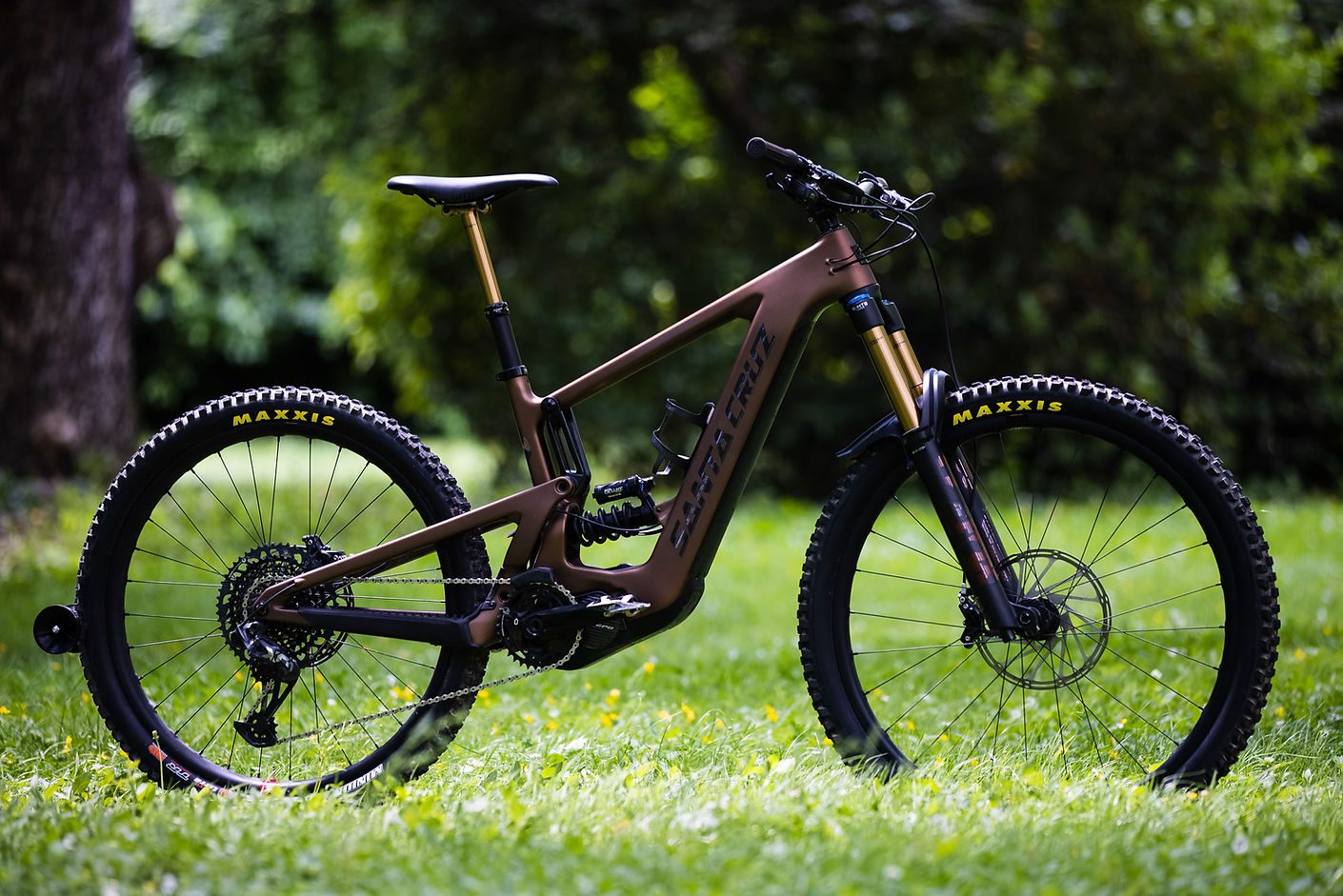
The Bullit is Santa Cruz Bicycle’s (SCB) second pedal assist e-bike. The first, the Heckler, also used a recycled model name - this is a clever approach from SCB, providing a level of continuity and connection with early models that we don’t normally see in the mountain bike industry. The Bullit embraces SCB’s MX platform (29” front, 27.5” rear), tried and proven in the World Cup downhill space with their V-10. MX is a very grown up way to describe this setup, with the informal ‘mullet’ usually the descriptor. Which brings me to full disclosure #2: I’ve been a mullet fan for several years now, and while the opportunity to rock one on my melon is long gone, the bike version absolutely fits with my riding style and the way I want a bike to perform. However, retrofitting a 27.5” or 29” bike to mullet configuration usually results in having to tolerate some level of geometry compromise, and that can be annoying. With my latest trail bike version, I have been able to get spot on with a fair bit of tweaking, so hopping on the Bullit for the first time felt immediately right and I was definitely in my happy place.
SCB have built the geometry of the Bullit around this MX style configuration, and that really is the only way to get the full roll-over, stability and increased traction benefits of the 29” front wheel, together with the cornering performance and flickability of the 27.5” rear wheel. The parts spec on the XO1 Coil build that I rode, was spot-on. Every component has been spec’d to support the desired use of the bike, and not a single component should need to be swapped out before throwing this bike at the trails. There will always be personal preference items that riders like to bring with them between bikes but, in this case, and even with my own little foibles in mind, there wasn’t anything I changed - or even remotely needed to change - before getting rowdy on this bronze machine.
The drive unit is Shimano’s latest EP8 motor with 630wh battery. This review alone could cover the full capability of this technology, but that’s not going to make for the sort of reading I suspect will fly. In summary though, this drive unit can be set to three modes – Eco, Trail and Boost – which are exactly as they look. Together with Shimano’s E-Tube phone app, using Bluetooth connection, each of those three power levels can be custom tuned around Assist Characteristics (eco through to powerful); Max Torque (20-85Nm) and Assist Start (mild through to quick). The permutations are endless, and setting the app up and changing any of those parameters is, thankfully, completely intuitive. Two full profiles can be setup as well, so it is simple to have something like a more flowing, full power/torque trail riding profile and a more gentle beech forest/technical riding profile stored- or even a dry roots and wet roots profile ready to go. This capability to custom tune settings is sure to provide endless fun for EP8 Bullit owners, and equates to a valuable trail-side tool giving the ability to tune the drive characteristics to the conditions. SCB went with Shimano drive units for the Heckler, and now the Bullit, due to the high level of international support, the natural/instinctive way they work, and their proven reliability. There is very little adaption time for the rider when hopping on one of these for the first time.
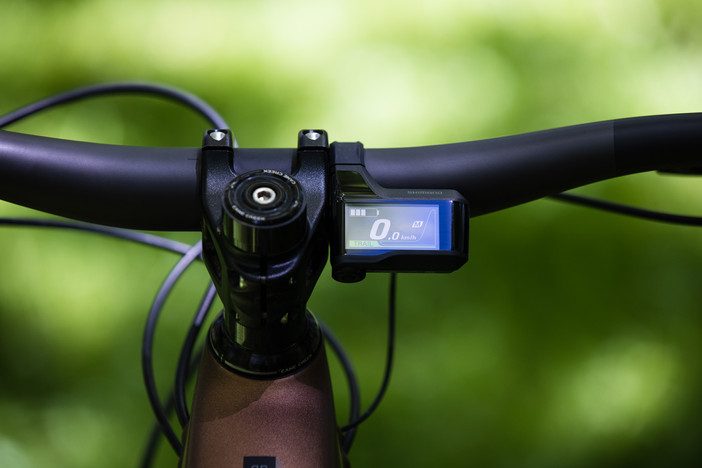
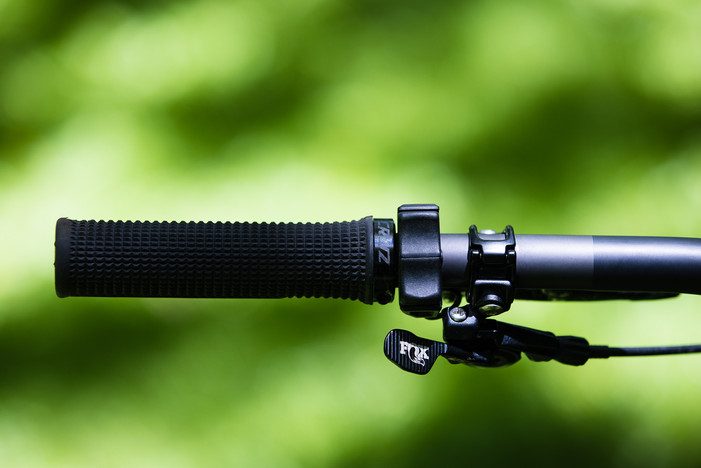
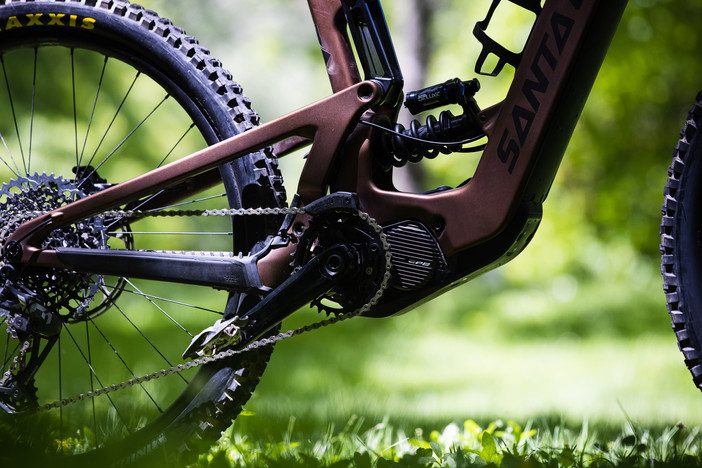
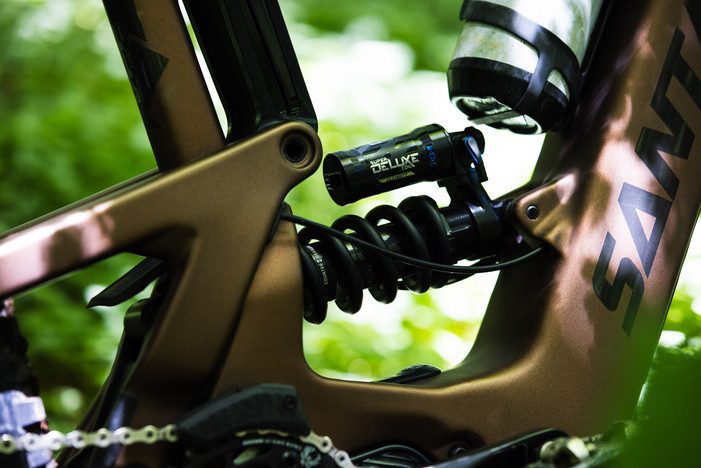


Our first day of riding was a bit of a shake down. Trails were reasonably dry and we hit some progressively harder trails as the afternoon wore on, including sessioning nasty, technical climbing sections that on a normal bike wouldn’t even be considered. My initial introduction and natural acceptance of the EP8 setup happened so quickly I was caught by surprise. Once I found the sweet spot around cadence, I was all over it. And that was a theme that ran through the media camp, regardless of what type of trail we were riding – when you’re working around that 80rpm cadence level, the world spins a bit slower. The first nasty, technical climbing section showed me that anticipation of gear selection, including using the single click shifter, needs to be slightly more advanced than on a non e-bike, to keep the motor working to deliver the right amount of torque and power through the drivetrain, to keep things surging forward. That learning again happened extremely quickly, and once sorted meant that ridiculously steep, rooty and slippery climbing sections of trail could be dealt with. It was relatively easy to get a feel for the torque assistance on these steep sections of trail too – constant pedalling pressure yielded great results, however, when climbing over steep, greasy root-infested sections of trail, some gentleness was needed to manage the torque. If front-back weight distribution was not quite right, even for the briefest of moments, things moved pretty quickly into Bullitt Fastback territory, with only the blue smoke missing! This is where the tuning capability of the motor really comes into its own, and dialling down the Torque, and possibly the Assist Start functions, will tailor the motor’s performance to the trail conditions, and desired performance. The bike does require a more deliberate technique with front/back weighting when climbing the technical, steep stuff though, with the drive system torque and power meshed in to provide more go-forward. It’s exactly the same technique as used on a non e-bike, but on steroids – the more deliberate the technique, the better the bike climbs. You definitely can’t just be a passenger on this bike and simply rely on the drive system to deliver in that sort of climbing terrain.
Our second day of riding kicked in after five hours of the sort of heavy spring rain we have had a lot of in Nelson this year. Trail plans were changed a wee bit as a result, with more of a focus on the lower areas of Fringed Hill to explore what the bike would do across a wider range of trail type. Day three took us to exactly the type of terrain this bike is designed for: steep, long climbs; technical, rooty and rocky linking tracks; and steep, rooty grade five goodness.
For me, slamming the bars on the large size bike was the only structural change I made, and it put me straight into a familiar mode of riding that usually only comes with a triple clamp fork setup. The front end of the Bullit encouraged that approach, with the Fox 38’s proving to be ridiculously solid and composed under severe front-end weighting and aggression. Non-plus size Double Down Assegai (2.5 front) and DHR II (2.4 rear) tyres give an obvious signal of the intentions of the bike, and are a welcome, important and entirely appropriate part of the overall spec, absolutely supporting the aggressive intentions of the bike. These same tyres are specced on all the different models of Bullit (as is the same CC carbon frame and EP8 drive unit), so SCB aren’t scrimping in that department.
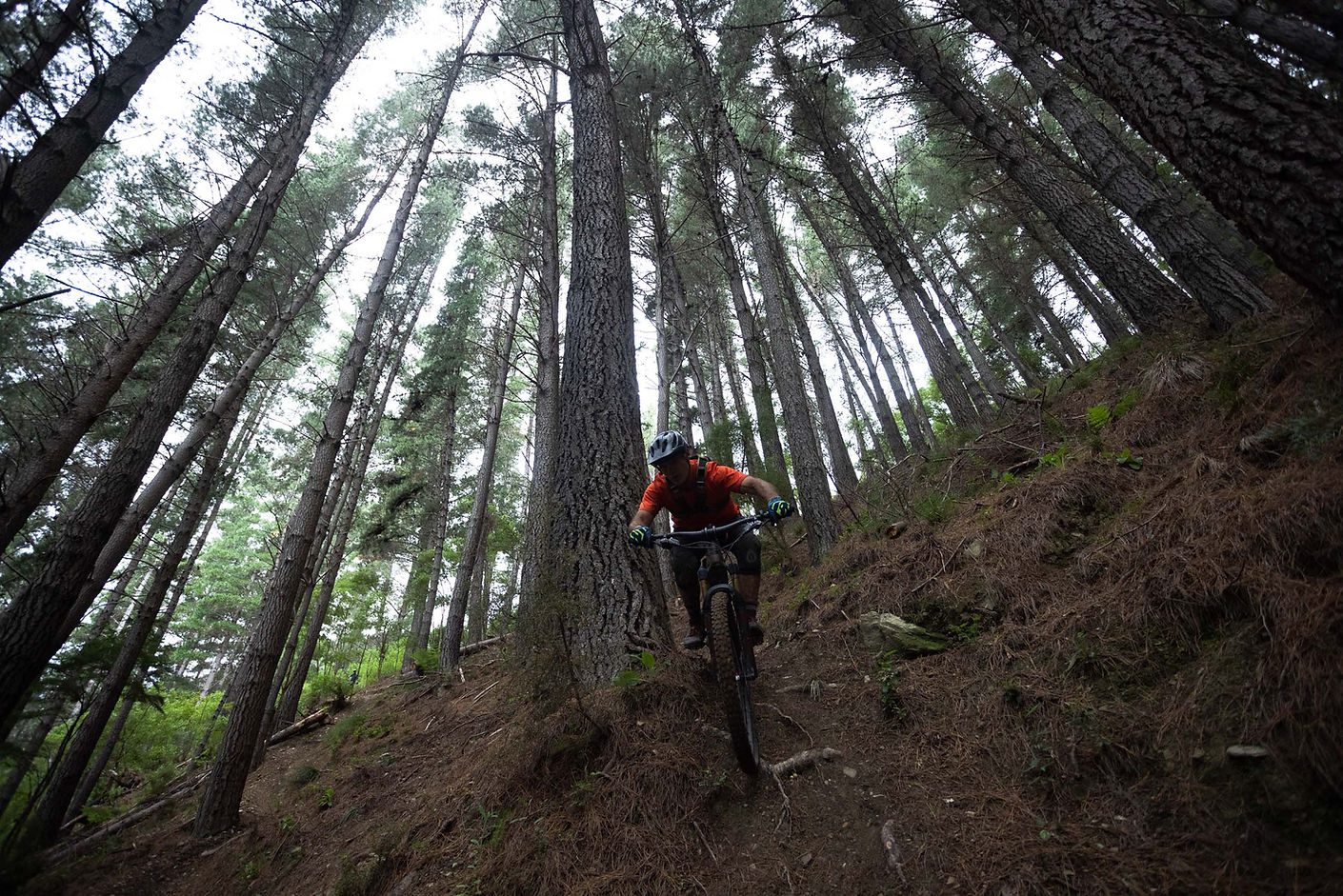
Carrying on the front-of-the-bike theme, two areas in particular stood out. How the bike took and held a line across off-camber, root infested trail sections was stunning – the combo of a fork with minimal lateral deflection, good damping performance and the super aggressive front tyre all working together to encourage line choice that would otherwise be off the table. Also, pushing the front of the bike through steep, deep holes and transitions was rock solid. No suggestion of the front of the bike ever getting hung up on even the nastiest of trail sections was a real confidence-inspiring characteristic. Big rotor Code brakes (220mm front, 200 rear) were right at home in that steep environment, with oodles of power modulation always on tap, and no fading to speak of at all – that says a lot about SCB’s approach to parts spec on these bikes.
Our wet day of riding showed two surprising traits with this bike that are well worth mentioning. The first is how receptive the bike is to hooking up on slippery surfaces when feeding constant weight through the middle of the bike – it was amazing. This trait alone yielded a lot of riding joy, and epitomised the ‘ride it like its dry’ mantra that is always the go-to for riding the slippery stuff. The weight of the bike and its low centre of mass sitting on those aggressive tyres worked in complete harmony to provide gobs of traction. The other trait that popped up in these conditions, that was a little unexpected, was how well the bike responded to being weighted and unweighted – natural trail pumping. The suspension platform provided plenty of support when getting aggressive in this area, and the bike responded in kind with making massive amounts of traction where needed, but also when getting its float on to glide over those sections of trail that required lightness. This was unexpected for me, as the weight of the bike had no real detrimental effects on this playful style of riding.
When the fickle Nelson weather took a break, it opened up a last minute opportunity to give the Bullit a run on some more open style, flowy type trails. Nelson’s classic ‘riding on marbles’ dry surface was the connection for this, and it showed some traits of the bike that might not have been fully evident in the technical style of riding we had been doing. Stability at speed was no problem at all, as was making traction where needed (see above), but the open stuff highlighted the need to get really aggressive with the body English to make this bike sing. A soft approach doesn’t gel with the Bullit – it begs you, as the pilot, to give it the firm prompts it requires to do its thing. The harder it is thrown, pushed and directed at the trail, the more the overall package responds.
Of course, a bit of jumping had to be factored in during our riding days - it would have been rude not to. E-mountain bike riders who like a bit of air time usually tell the same story when asked how their bikes perform in the air, and it was great to be able to confirm that on the Bullit. Not only does normal jumping technique apply, but the weight of the bike adds a ramped up level of stability when in the air. It sort of makes a lightweight trail bike feel just a wee bit sensitive! So jumping performance gets the big tick too. And – just a quick comment on the bike’s weight: SCB quote just under 23kg for the XO1 Coil we rode. That is a true weight, and considering the coil shock and downhill tyre spec, it reflects very favourably on the overall package. Compared to most other bikes in this category, it is definitely at the lighter end of the scale.
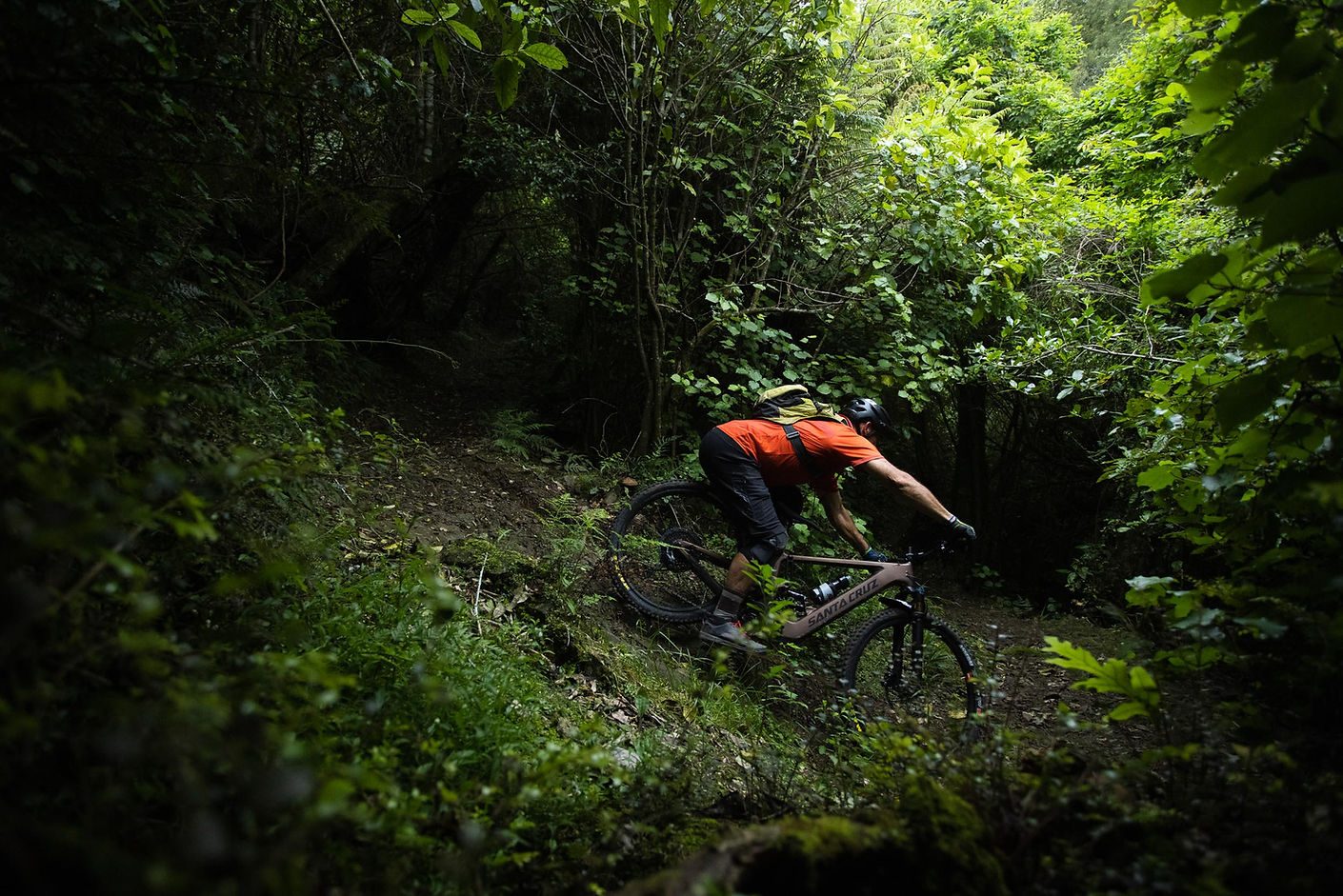
Without getting all tied up in watt hours, power settings etc, a five hour hard ride took us into one-bar-battery-remaining territory which, depending on power setting to get you home, was in the realm of about a 15km back-up range. That was after five hours of hard riding and climbing at pace. For my legs and lungs, the load we were climbing at was very close to my normal riding, but at three to four times the pace. That surprised me too, and I’ve come away from this review having dispelled any suspicion that pedal assist mountain bike riding might be too easy. Of course you can cruise, but using the drive system to its full capability becomes a new normal very quickly. I honestly didn’t realise just how quick we were climbing on these bikes until we came up behind non e-bikes.
I’d say Santa Cruz Bicycles have met their claims with the Bullit. They are bold claims, but so is this bike. Yes, it’s got some weight to it, but it didn’t take much time on the bike for that weight to be pretty much forgotten; the overall package just works so well. Yes, it’s a lot of coin too, but it’s also an awful lot of bike and probably represents the sharp edge of where this technology is at. The spirit of the original Bullit lives strong in this new model, and I reckon that the King of Cool, Steve McQueen, would have approved if this Bullit had been around in his time.
Distributed by Hyperformance
Words: Chris Mildon
Images: Henry Jaine
Review: Granite Design Stash Chain Tool
Granite Design’s Stash Tool offers everything you need for a quick fix, but it’s lacking one thing: a chain breaker. The Granite Design Stash Chain Tool is a chain tool that hides away inside your bar-end, and is their solution to the Stash’s lack of chain breaker. When combined with the Stash Tyre Plug and Stash Steerer Tool, it gives you the ability to carry everything you need on the trails, integrated on your bike.
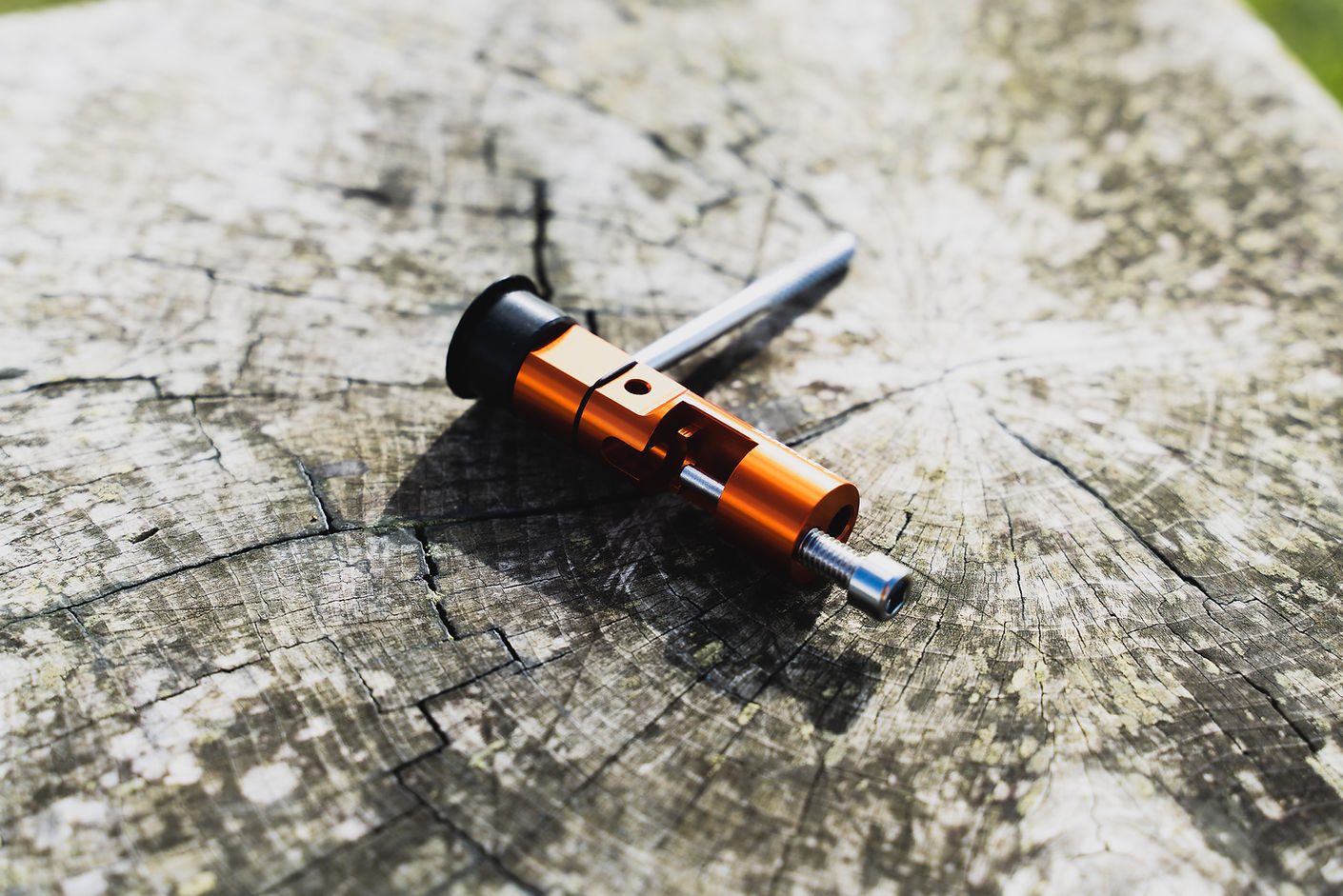
The Stash Chain Tool consists of a few parts: the breaker body, the driving pin and a steel handle. All of the parts are stored within the tool body itself, which also features a spot to stash a quick link. Something that had impressed me with the Granite Design products I’ve tested so far, is the build quality - and the case is no different here. All the threads are well formed and secure, and the actual material used feels nicer in hand than some multi-tools out there. The Stash Chain Tool is secured inside your bar by a 3mm bolt. Tightening this bolt compresses, and therefore expands, a rubber bushing on the tool that wedges up against the bar, providing a solid, rattle-free fit.
When it comes to operation, the Stash Chain Tool is a breeze and partners up well with the Stash Steerer Tool or the RocknRoll (both of which you’ll find reviewed in this issue). Undo the 3mm bolt on the cap until you can remove the tool from your handlebars, unscrew the handle from the tool body and screw it into its mount, then break out the 5mm on your multi-tool to drive the pin. There ya go, ready to break any 9-12 speed chain that finds its way into your tool.
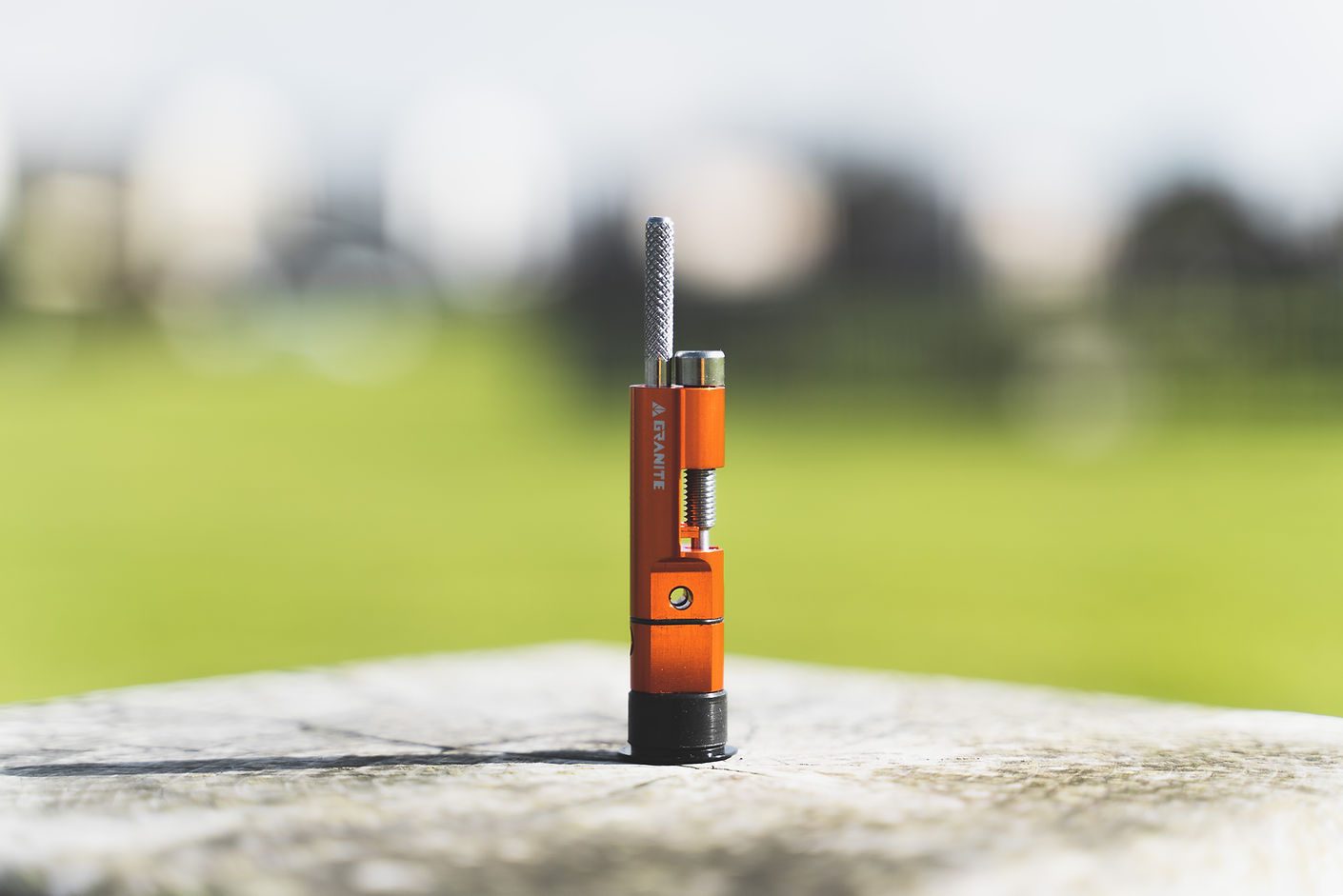
Emergency chain breakers are exactly that, meant to break chains in emergencies. As a result, they are often just good enough to get the job done, so I was surprised by the amount of leverage provided by the Stash Chain Tool, and how solid it felt in hand. The teeth that retain the chain in the tool are smaller than a typical chain breaker, so you do need to spend some extra time making sure everything is lined up before you go cranking on the tool. As far as a compact chain breaker you can carry with you on the trails goes, it’s about as good as you’ll get.
It’d be nice to see another handle integrated somehow, to drive the breaking pin, but this is by no means a deal breaker and I can say that whether you intend on using the rest of Granite’s Stash range or not, the Chain Tool is definitely a worthwhile purchase. Especially if you want a solid chain breaker that you can leave on your bike and forget about.
Distributor: Everoutdoor / RRP: $49.99
Words: Cam Baker
News: Exposure Lights now Available in New Zealand
FE Sports are proud to announce Exposure lights to its portfolio of premium cycling brands as part of our exclusive offering to the New Zealand market.
"We at Exposure Lights have been looking for the perfect partner to distribute Exposure in New Zealand for a while and holding off until we found that in FE Sports. Firstly, they are riders that ride and not just talk about riding. Secondly, they know what the bike shops need in the way of business and product support.” said Mark Swift Marketing and Brand Manager Exposure Lights.
General Manager at FE Sports, Darren Harper added “It was a simple decision when we were offered the opportunity to represent Exposure lights and see this as a perfect alignment for FE Sports and the New Zealand cyclist looking for the best lighting solution on the market”.
We will continue to review our product and brands portfolio to deliver unique retail opportunities that will assist our partners to increase sales and drive new growth within their businesses.
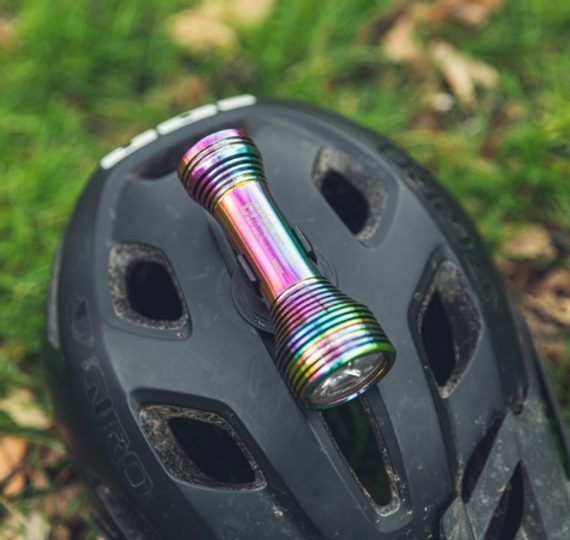
DIABLO MK12
Exposure's best selling light with a slick new finish. Aero grade 6063 Aluminum coated using Physical Vapor Deposition. Triple LED's created a wide beam, combined with fast mode charging TAP technology, the Diablo's 1800 lumen output will enable you to pin most trails that are in front of the wheel. With a lightweight, CNC engineered aluminum body the Diablo gives you license to raise hell on the trail!
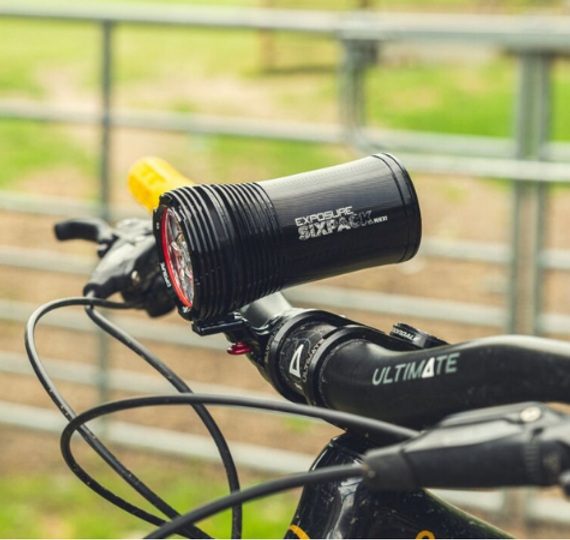
SIX PACK MK11
The Six Pack's deep reaching and open beam is our brightest for intense shreds and the highest capacity battery stores enough power to last the duration of the longest endurance events. Just use the OMS (Optimised Mode Selector) to choose the runtime for your needs from 2 to 36 hours. Together with the Reflex++, the six pack will automatically give you the perfect lumen level no matter the ride. The Smart Port utilises the large battery as a power bank for your other devices for an overnight bike packing adventure; there aren't many off road riders who couldn't benefit from a Six Pack.
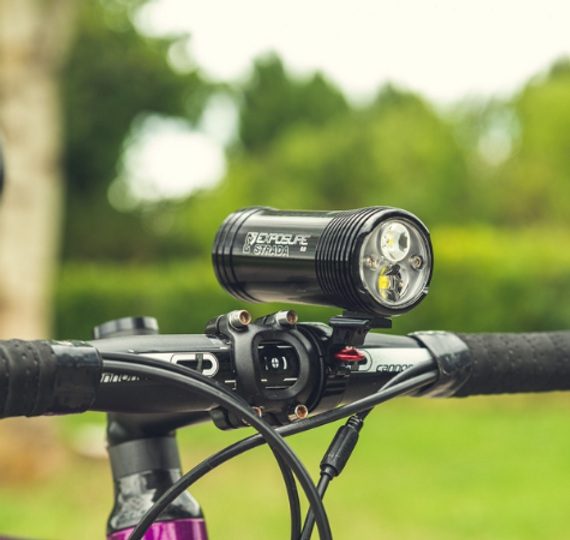
STRADA MK10 SB
The Strada SB, Super Bright, with our Road Specific Beam Pattern and at 1500 lumens remains the best road light; with the specific bevels to allow side illumination, and reversible graphics to remind you that the Strada can be mounted either way up. The included remote switch allows for ease of use, keeping you in total control without taking your hands off the bars and with fast charging to ensure the lights are ready for the ride quicker.
FE Sports already has a range of Exposure products in stock and ready for immediate delivery. Please call (09) 88 44 882,mail info@fesports.co.nz or click here for further information and product support.
News: Wairoa Gorge MTB Park is Open for Business
The Wairoa Gorge Mountain Bike Park riding season grand opening is the 18th of September 2021.
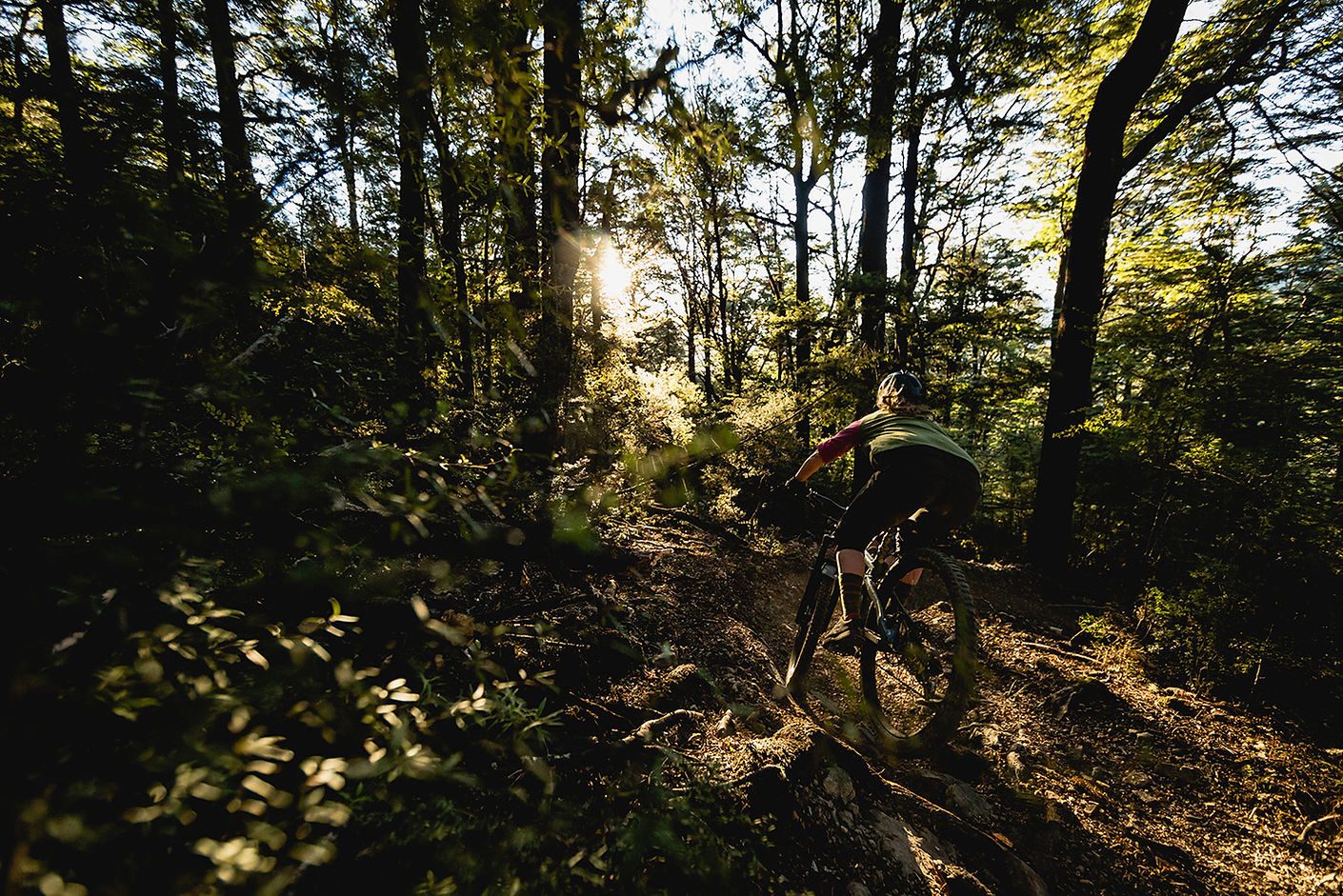
After a very wet winter and lockdown, roads into the park are open and thanks to a large army of Nelson Mountain Bike Club volunteers and Gorge crew who have groomed and cleared the 70km of single-track, the trails are in mint condition.
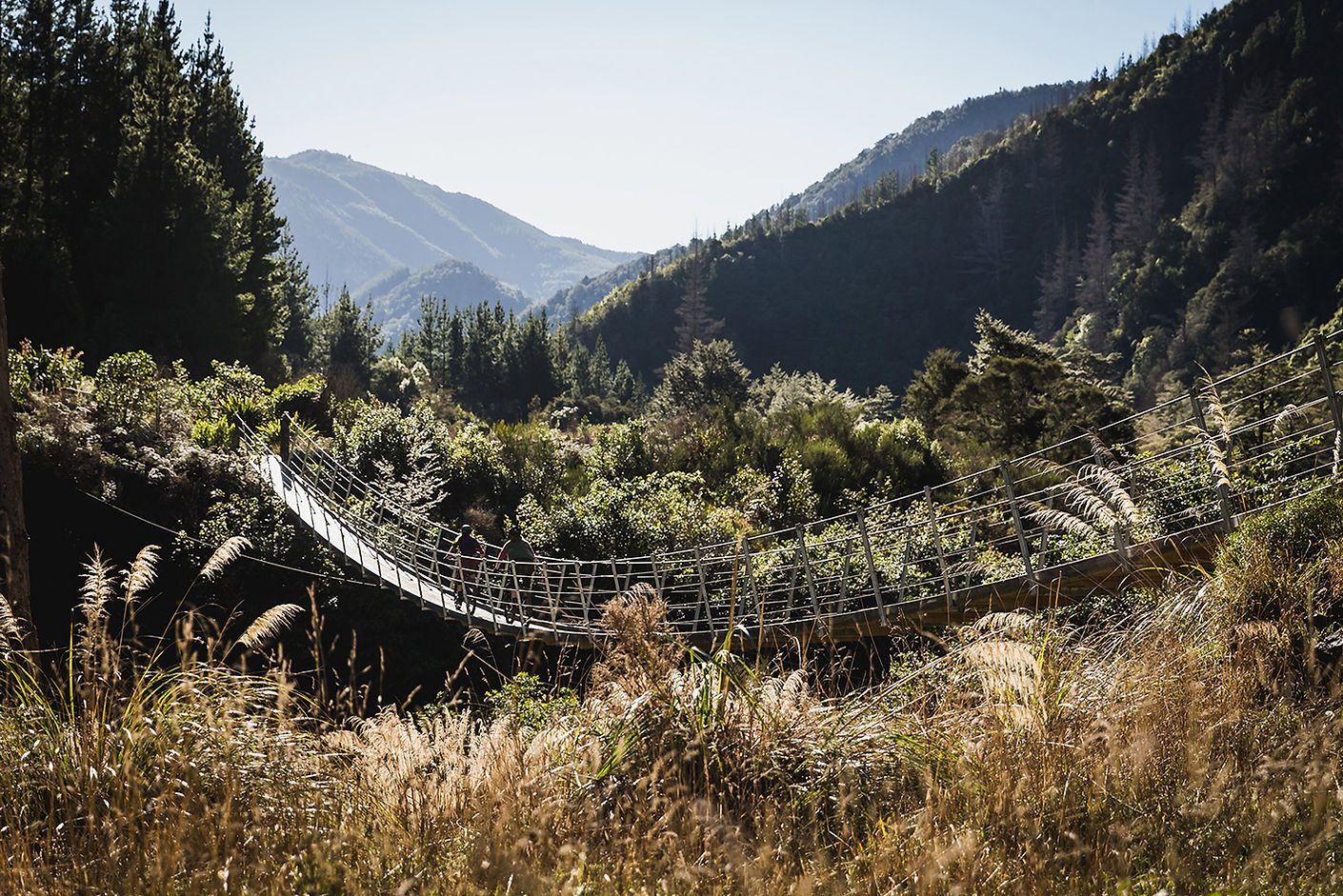
Excitement is building amongst the riding community for a great season at The Gorge with new options for the 2021/22 season.
-
First up is The Gorge express shuttle on our new Yamaha Viking 6-seater side x side that will be one of the hot tickets for the season - do as many shuttles as you can between 9am and 2pm.
-
For E-Bike fans, The Gorge offers a single shuttle up where the e-biker can access some of the best grade 3-4 single track climbing and riding in New Zealand.
-
Great new affordable pricing caters for non-NMTBC members and out of town visitors.
-
Great discounts for NMTBC club members.
-
New accommodation options at Barry’s Hut and Gibbs Lodge.
Booking is available via www.thegorge.nz
News: Crankworx South Island Summer Series
New Zealand, September 9, 2021: Crankworx has today announced the addition of a summer series festival in New Zealand. The multi-stop mountain biking festival will see international and local riders explore the varied terrain of Central Otago, Queenstown and Wānaka, known for epic vistas and world-class mountain biking tracks. The Crankworx Summer Series will see Crankworx-calibre racing come to local destinations outside the usual World Tour, giving up-and-coming riders and locals the chance to mix, mingle and drop in with some of the world’s best mountain bikers.
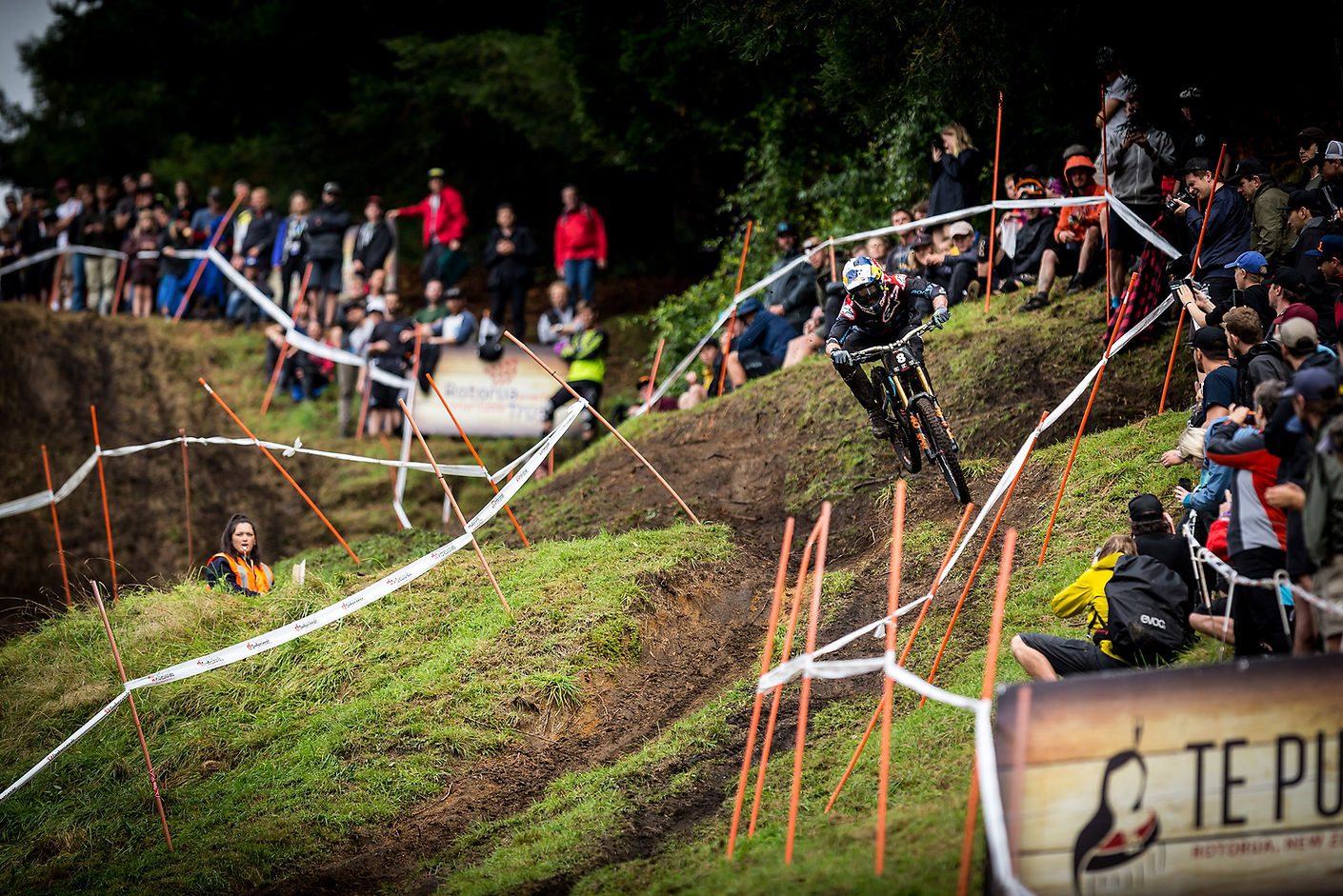
“I’m super stoked to be heading to these unique riding destinations,” said Keegan Wright who’s set to race alongside his international and local peers. “With each spot having totally different terrain to the other it’s gonna make for awesome racing. I’m looking forward to getting to share these times with all of the Crankworx family! Can’t wait to kick the New Zealand summer off in true style. STOKED.”
Riders and spectators alike will see the best of summer in one of the hottest parts of New Zealand this time of year. The Crankworx Summer Series makes for the ultimate roadie: sunshine, scenery, friends, bikes, and real fruit ice cream in the adventure capital of New Zealand. It’s an unfiltered, grassroots festival, with Crankworx-calibre racing, set to bring massive benefit for its destinations.
Crankworx Rotorua’s Event Director Ariki Tibble explains: “Crankworx has played a key role in raising the profile of Rotorua as a destination over the past 6 years. The mountain biking scene has taken off and seen us become a key destination on the list for riders, from families to avid riders and the world’s best. We know how powerful this has been for the region, and this is the first opportunity we’ve had to unlock some of these benefits for other regions in our country. The mountain biking in Central Otago, Queenstown and Wānaka region is out of this world, not to mention its world-renowned scenery and epic summers. It’s inspiring to see young people riding alongside their heroes and appreciating the trails we have in our own backyard. We can’t wait to bring a grassroots version of our Crankworx Festival to the South.”
“We are proud to have been able to support the Crankworx Summer Series, enabling it to take place in 4 locations throughout the region” adds Murray Strong, Southern Lakes Events Investment Panel Chair. “The region’s biking facilities have had significant investment put into them and the Crankworx Summer Series will be a fantastic way to showcase what the region truly has to offer for all levels of biking enthusiasts".
Darren Kinnaird, Managing Director of Crankworx, continues: “I’m thrilled to see how the Summer Series concept has taken flight in New Zealand. This idea of the ultimate mountain bike road trip was born in British Columbia last year. It created such a great opportunity to bring a taste of Crankworx to different locations and get athletes out racing in different places outside the Crankworx World Tour circuit. I can’t wait to hit the road after Rotorua and bring the action to these other iconic riding destinations and take the world along for the ride.”
The Crankworx Summer Series 2021 will kick off on November 27 and run through December 12.
Locations:
· November 27-28: Matangi Station Mountain Bike Park, Alexandra
· December 4: Skyline Queenstown
· December 4-5: Queenstown
· December 9: Cardrona Alpine Resort
· December 11-12: Bike Glendhu, Wānaka
Disciplines/events:
· Alexandra: Super D
· Queenstown: DH and Pump Track
· Cardrona: Air DH
· Wānaka: Dual Slalom
Two events (Queenstown Pump Track and Wānaka Dual Slalom) will be live broadcast on crankworx.com during the series, with photo and video highlights available of the other three events.
The all-stars on deck who’ll be all-in and ready throw down include:
· Georgia Astle (CAN)
· Danielle Beecroft (AUS)
· Casey Brown (CAN)
· Harriet Burbidge-Smith (AUS)
· Robin Goomes (NZL)
· Kialani Hines (USA)
· Bas van Steenbergen (CAN)
· Vaea Verbeeck (CAN)
· Keegan Wright (NZL)
More riders will be added to the roster in the coming weeks.
For those looking to get amongst, there will be race categories for Pros, Amateurs and CWNEXT racers. Details of registration will be released soon! Those keen should keep their eyes locked on @crankworxrotorua on Instagram or Facebook for details.
Prizing will be awarded for each event, with overall titles awarded at the end of the series.
For spectators who want to watch it all go down, the Crankworx Summer Series New Zealand will be free to attend.
Athletes can register from 20 September 2021.
For more information on the Crankworx Summer Series, visit www.crankworx.com.
Column: Mountain Biking is Dead
Mountain biking in 2020 certainly looks different to 30 years ago when I first started. What we were doing on our bicycles back then is now called gravel riding. Mountain biking today could be loosely defined more as downhill riding than the cross-country flavour it had when bikes were rigid and as difficult to ride on single-track as the bastard-child gravel bikes of today. Probably harder. No-one would dispute that mountain bikes bear more than a passing resemblance to motocross bikes than a bicycle in its traditional form - even more so now, with the emergence of the electric pedal-assist mountain bike. I can hear you shouting at the page already.
Back in 1990, combustion-powered dirt bikes were my ticket to high-speed, go-anywhere fun. Bicycles were what you rode to the pub, or school, or - if you were “into it” - jumping your BMX down at the local track was probably as far as you'd venture. Our two-wheeled crew were finding it hard to keep up with the increasingly advanced tech and cost of motos, and these mountain bikes were just big BMX bikes... right? That's what we thought - and every one of our moto crew soon realised that the places we rode under power were almost impossible to enjoy on these “all-terrain bicycles”. All but myself promptly moved back to 2-stroke power or gave the riding game away altogether. No-one wanted to pedal for two or three hours in the Aussie sun and not throw a roost or get even a modicum of air, but something about the athletic side struck me and I became an XC guy, aka a mountain biker, like the majority who weren't rich or fast enough to be a downhiller. It would take 15 years for me to even consider that rear suspension might actually make things better; closer to what my original vision of mountain biking was way back when.
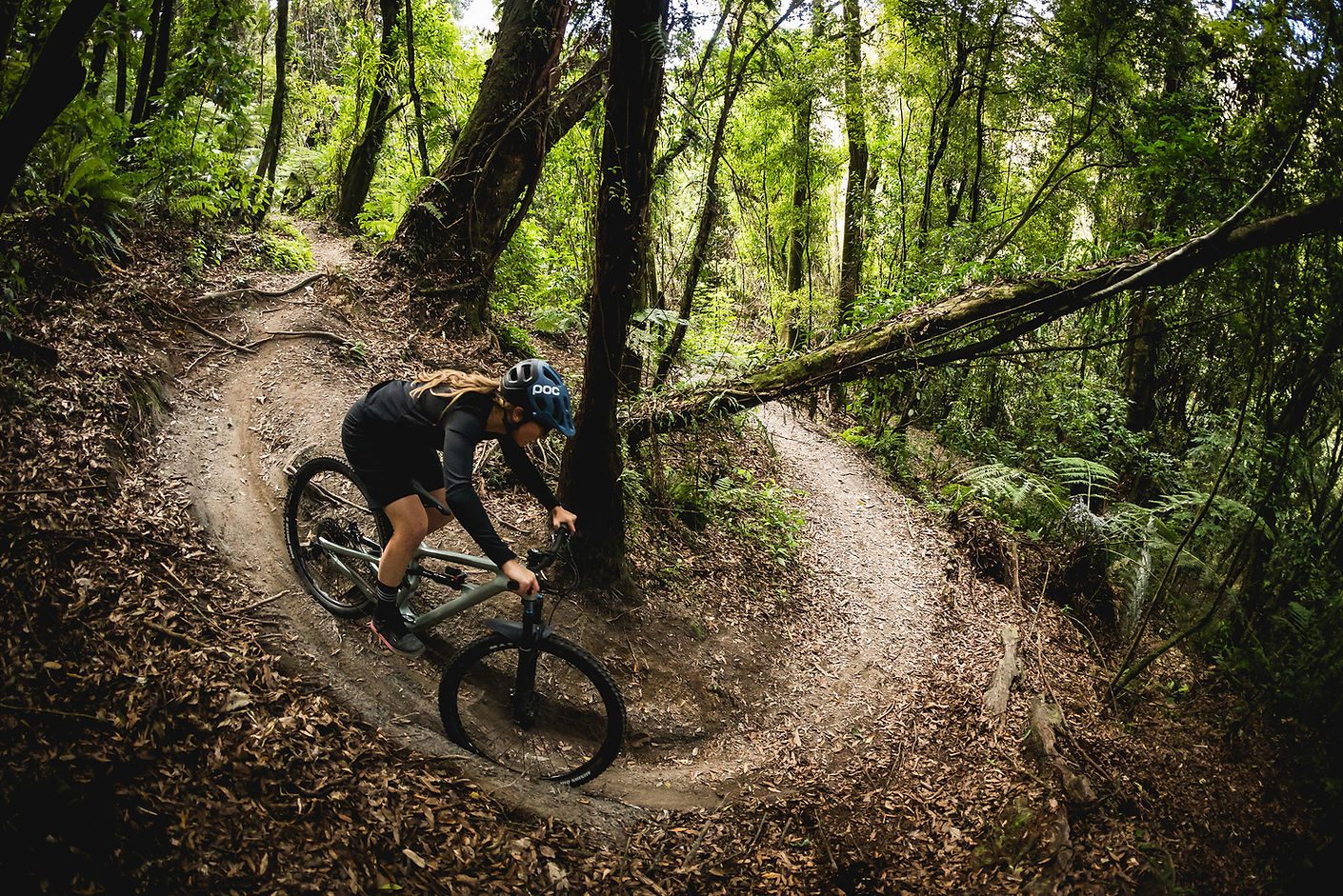
As bikes got more suspension, bigger tyres and even more capable at climbing, they seemingly made us not want to actually ride them uphill anymore. After all, it is all about the downs, right? Why ride back up if someone has a bus, Ute or trailer? The bikes most of us ride now are closer to motos than they are to the original 'mountain bikes' from whence they came. But those same riders, most of them over 40 now, who sit in a shuttle bus lamenting to each other that “e-bikes suck” or they'd only consider one when they're “old”, seem to think that it's somehow cheating and/or an affront to their man/womanhood to add 250 watts to their life. For anyone who states they want to ride more often, for longer, on more trails, a staunch rebuttal of anything ‘E’ appears just a tad hypocritical.
Now, here's a big disclaimer: I haven't really ridden an E-MTB properly off-road. A couple of demo days here and there, and a lot of test rides up the street, as I also assemble and sell these (and 'proper' mountain bikes) a couple of days a week. Even with such limited time, actually using an E-MTB how it's intended, I'm convinced that in the not-too-distant future the majority of mountain bikers won't be stuffed into a smelly, dusty bus, but making their own way to the top and actually enjoying it. Heck, they might even look for more difficult and challenging ways to ascend, rather than the easiest - which is closer to the original concept of mountain biking than I think it has been for quite a while. Ride up, ride down.
The age old argument is also an annoyingly moot one, as I see it, although I'm pleased I can easily summon it if under fire when I go electric. Every mountain biker, and especially those at an advanced skill level, wants to ride more - surely? And when they do ride, do they not want to have fun? The whole time? If they have an hour to get a ride in, do they want to spend two-thirds of it grinding or pushing the bike up a hill? Maybe it's just me, but more/faster/longer seems to add up to funner.

And for Pete's sake, these aren't motorcycles! However, despite the motor, they are closer to one than the bicycle which spawned them. Mountain bikes have virtually been engineless motos for years now, and my moto genes are being freshly tickled by the tech side of the new genre, too. Enduro racing now seems like something I might want to do again, with e-bike categories cropping up at many events and a host of legends from all disciplines getting on board for the EWS E-series. It seems just about proven now that E-MTBs don't destroy trails any more than standard bikes, and they're not going to come screaming out of nowhere at 50kmh and wipe you out.
All this gushing praise and apparent attempt at validation may well be baseless without proper time and experience on an E-MTB. But, having witnessed dozens of trends and evolutions in the sport, I'm convinced pedal-assist mountain bikes will become the dominant vehicle of the bicycle industry, just as the human-assist MTB currently is. As with any technology from the last 20+ years, E-MTBs will get lighter, their batteries smaller and more powerful, and motors will shrink in size and grow in torque, until what we ride is even closer to what we're self-pedalling now. Only more often, faster, and for longer. Win/win/win.
Words: Brett Kennedy
Image: Cameron Mackenzie
Video: Back to School With Commencal
Back to school time has come for our teens!
Summer is coming to an end and what a summer it’s been for at least 3 of them. Till Alran, Max Alran and Sacha Brizin did bike park sessions, DH races and dirt jumps during all their holidays.
Fortunately, going back to school doesn't mean they'll have to put their bikes in the garage. They plan to go to school on their bikes and enjoy after school sessions on their ABSOLUT!
Riders:
Till Alran (@alran_till_mtb)
Max Alran (@max_alran_mtb)
Sacha Brizin (@sach.briz)
Film & Photography:
Nicolas brizin (@nicolasbrizin)


